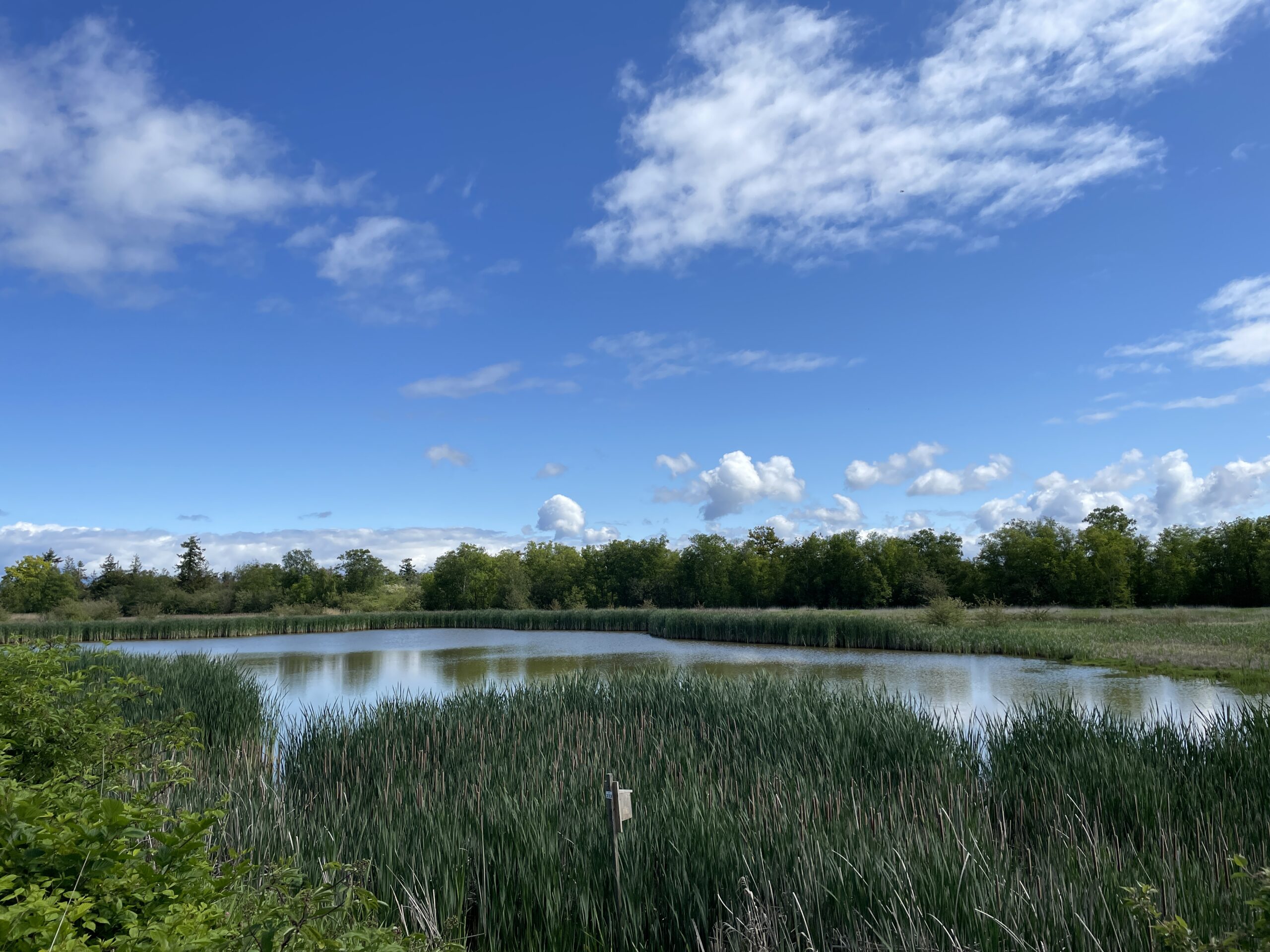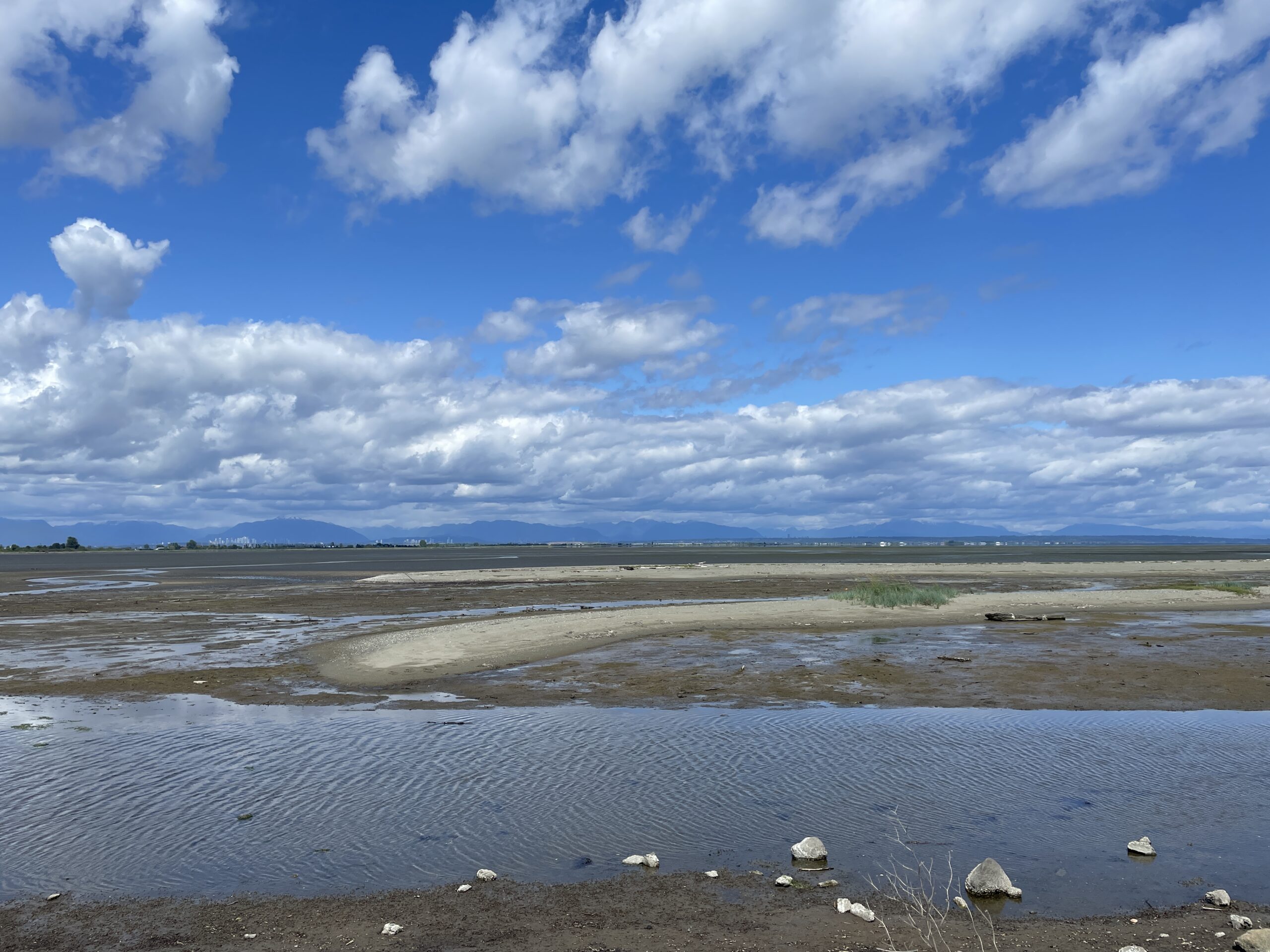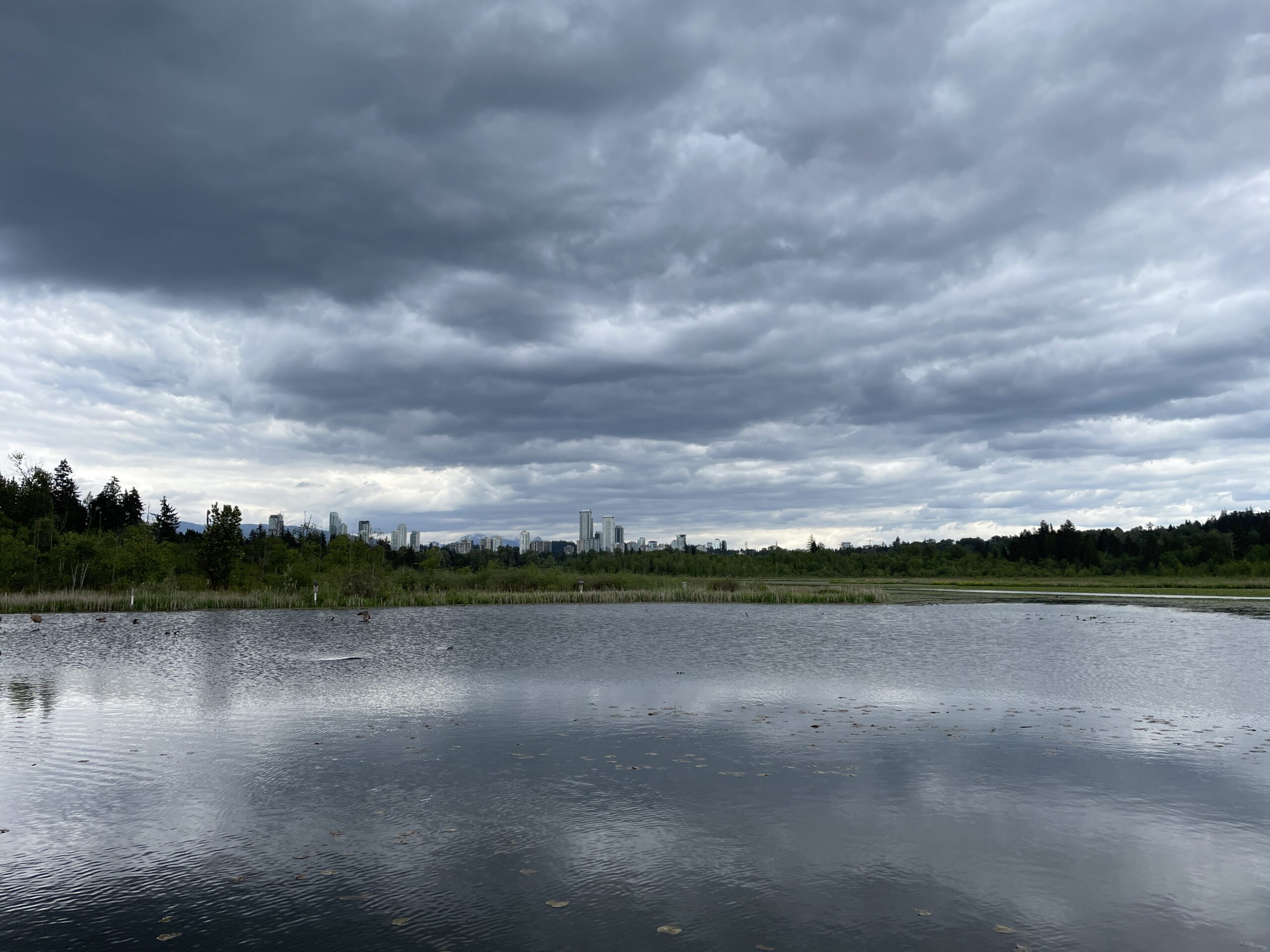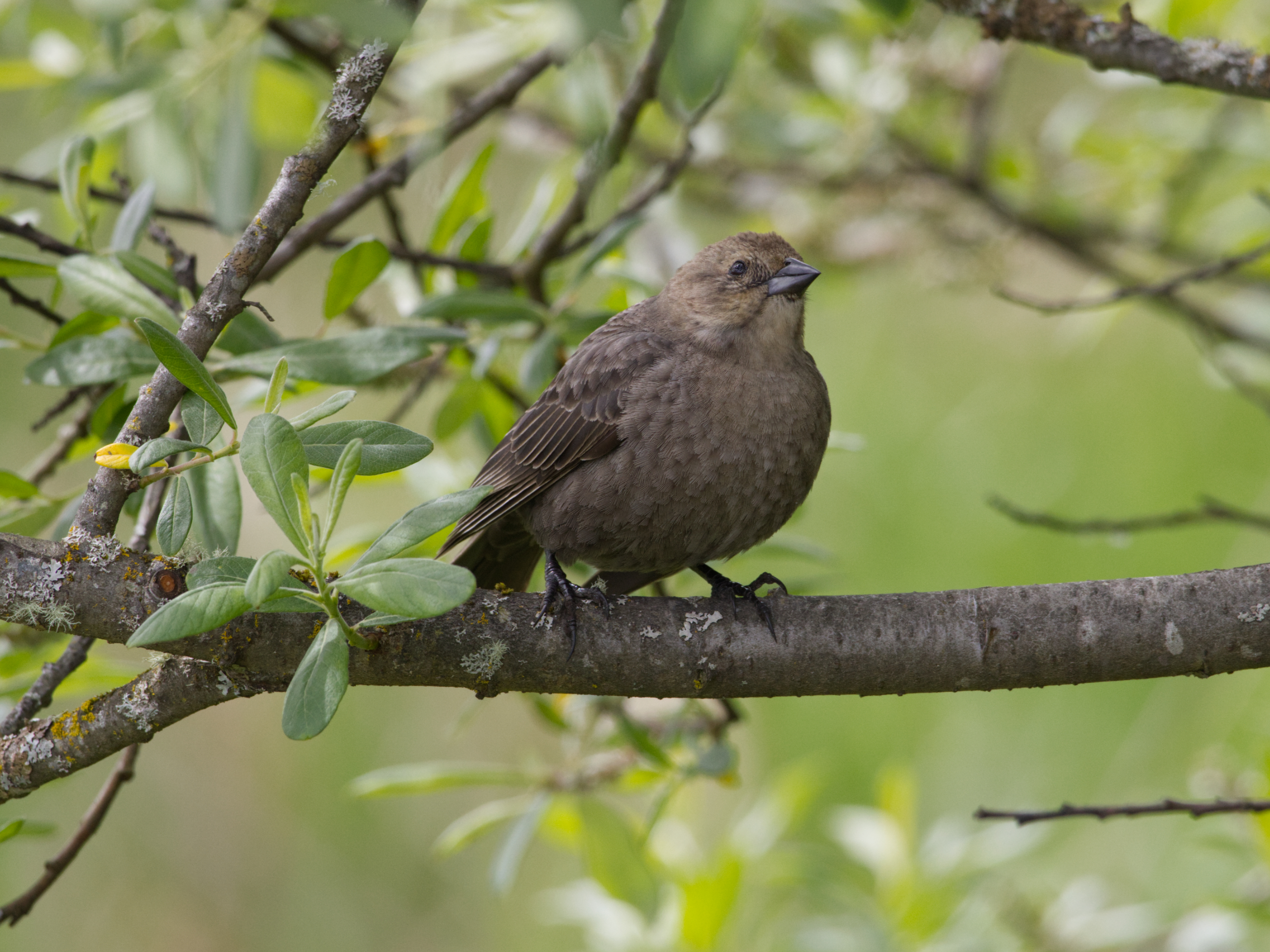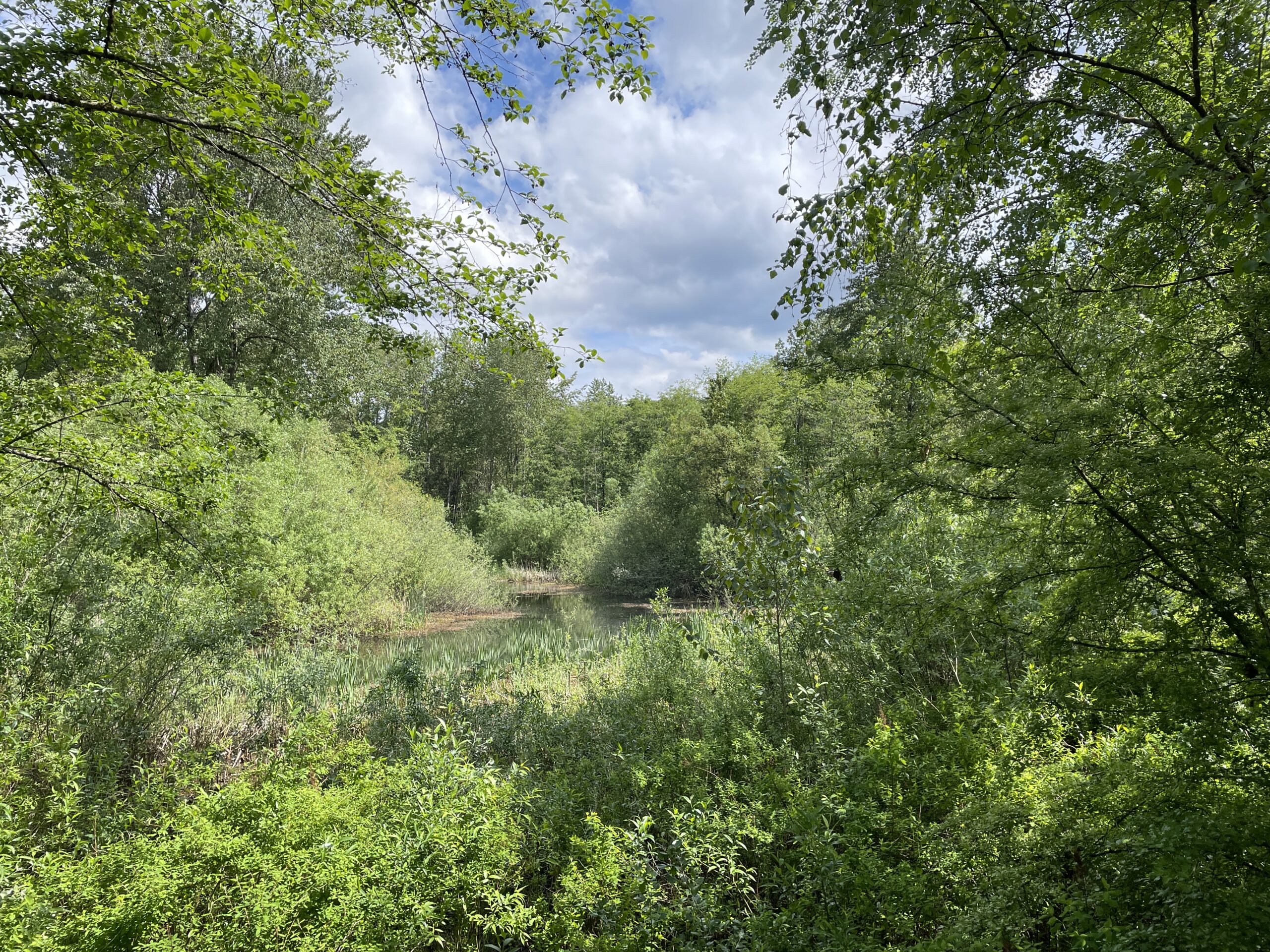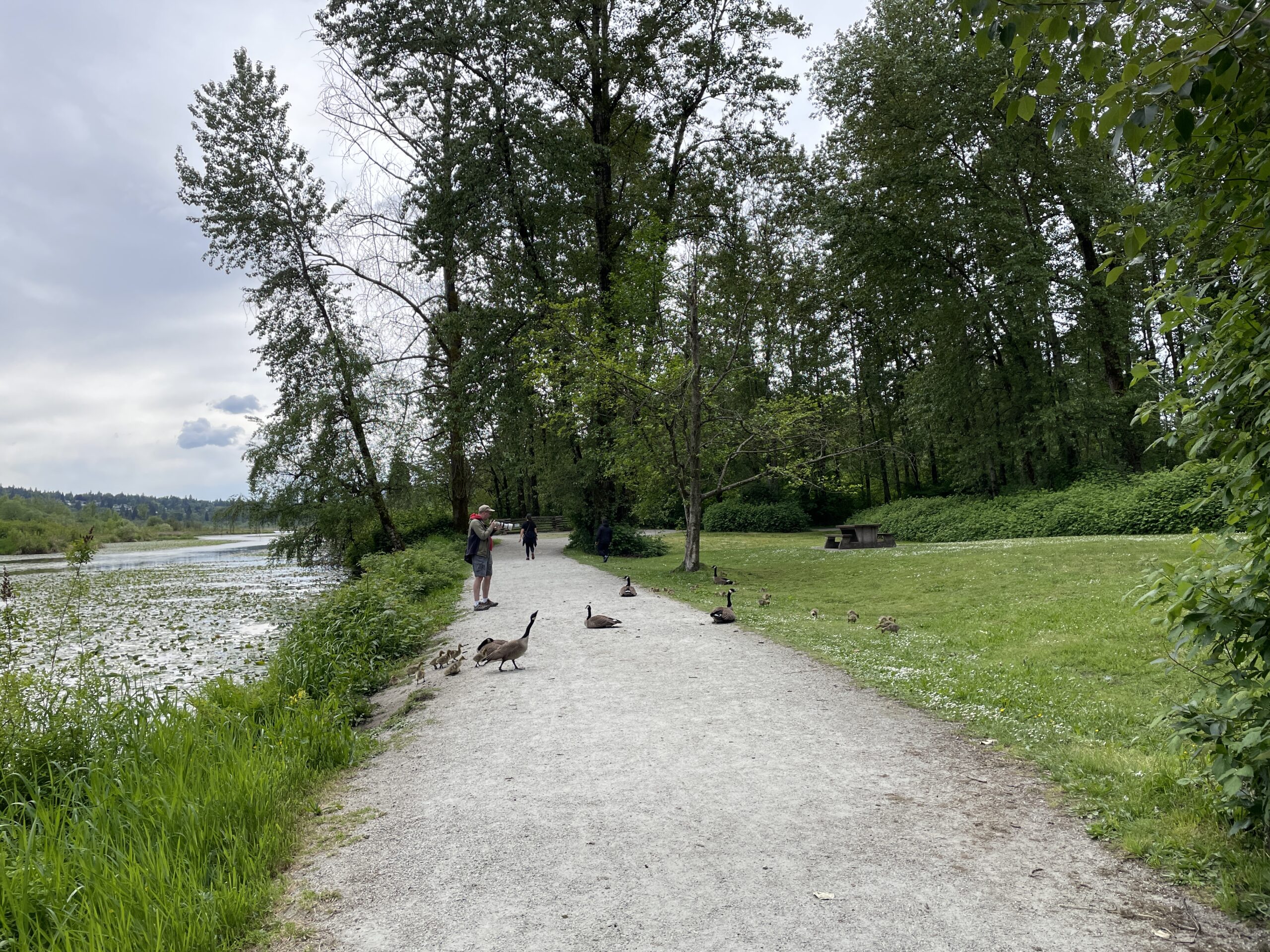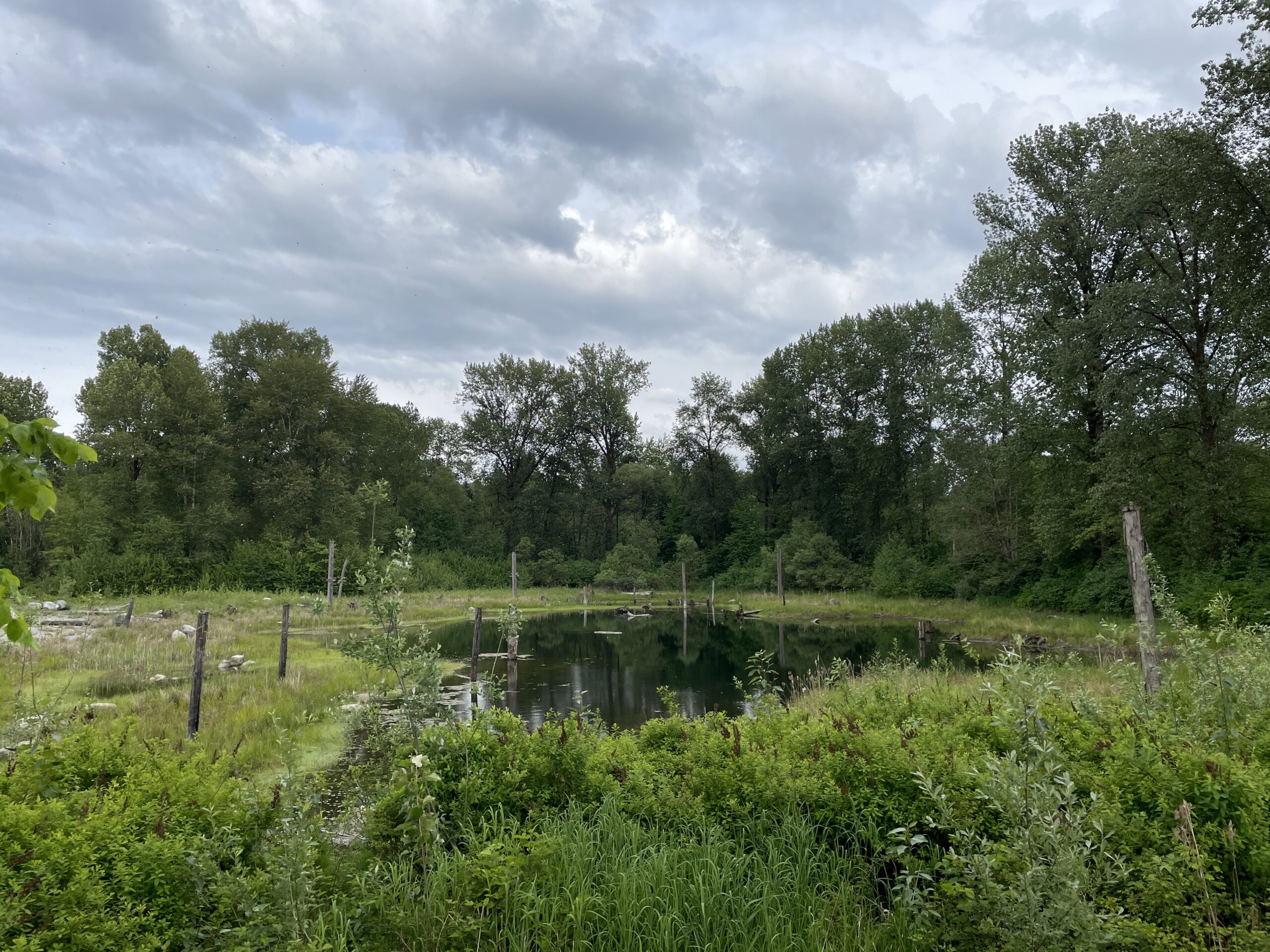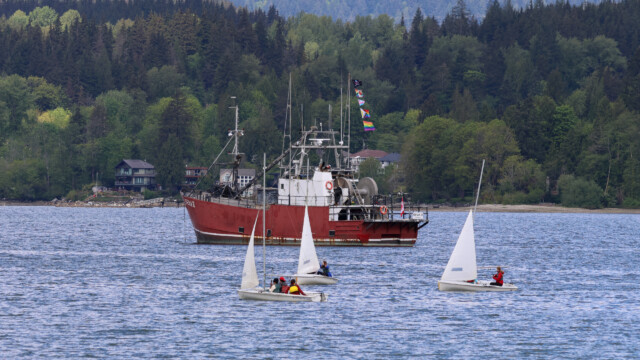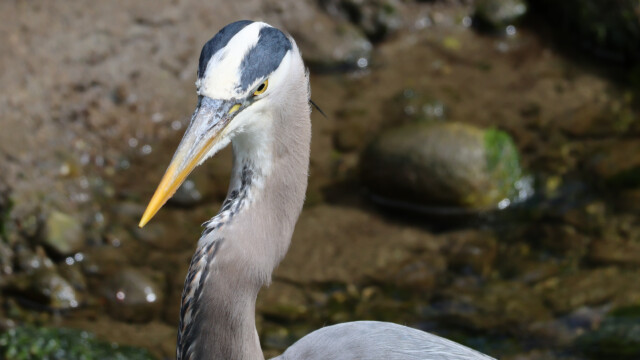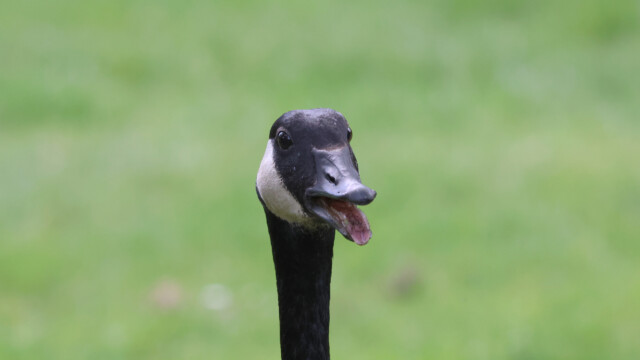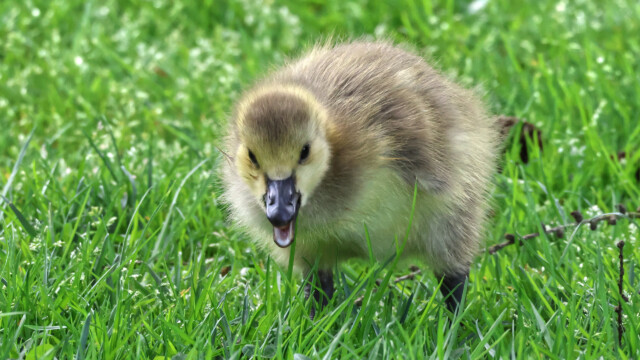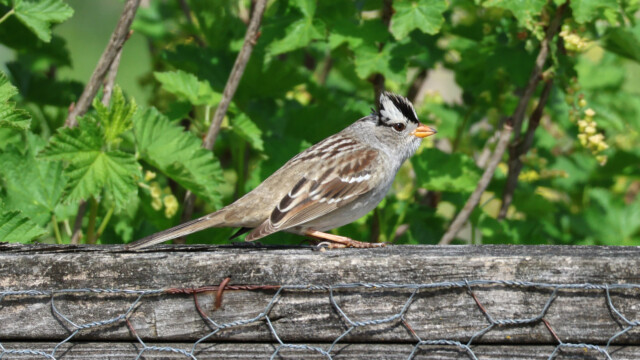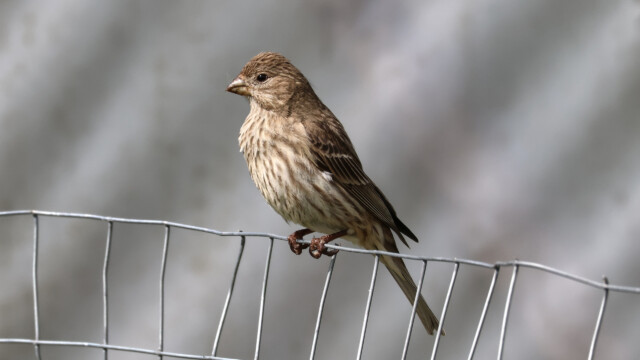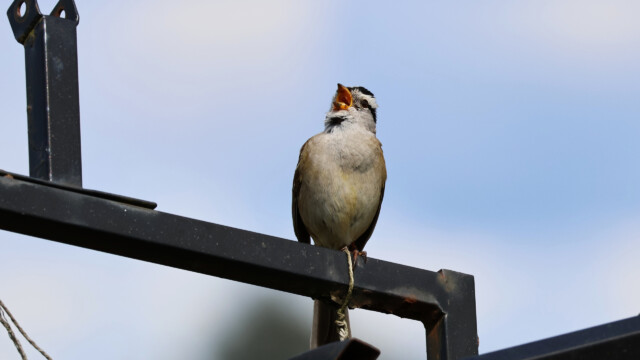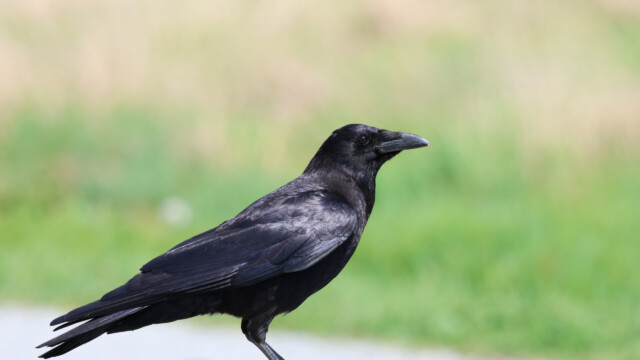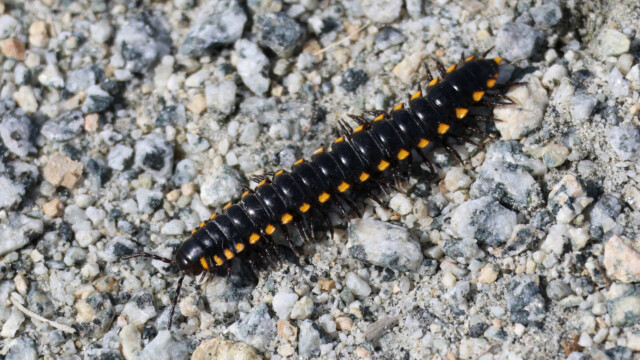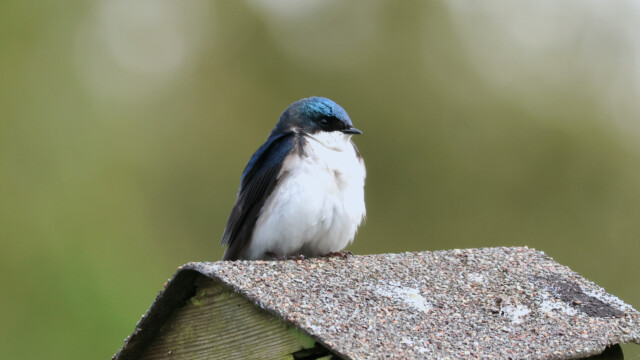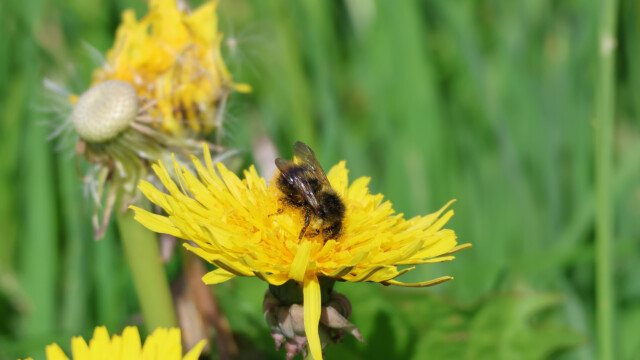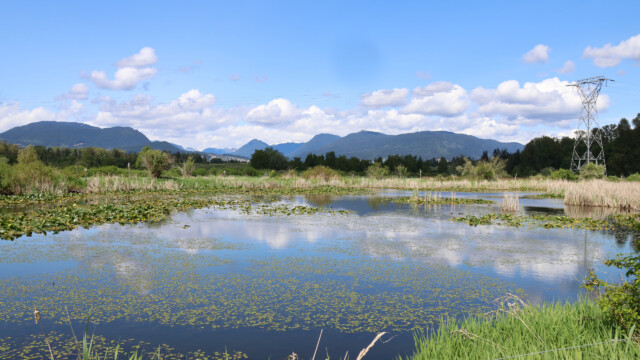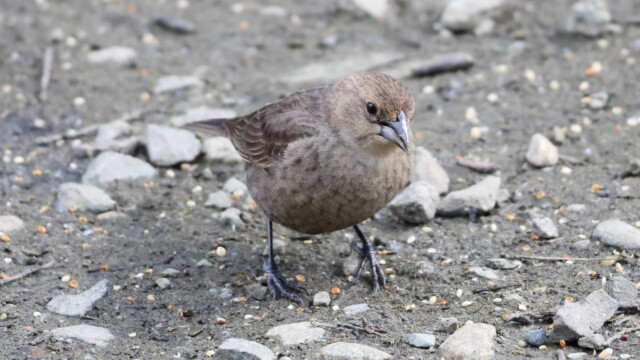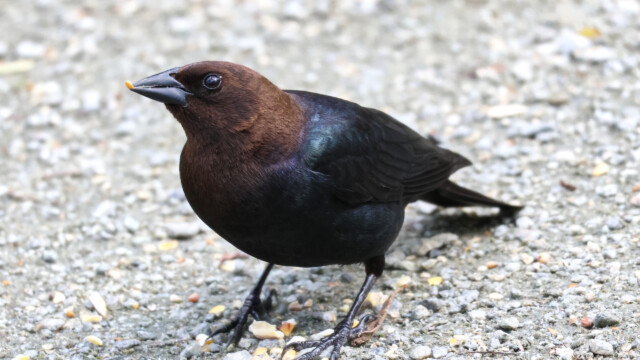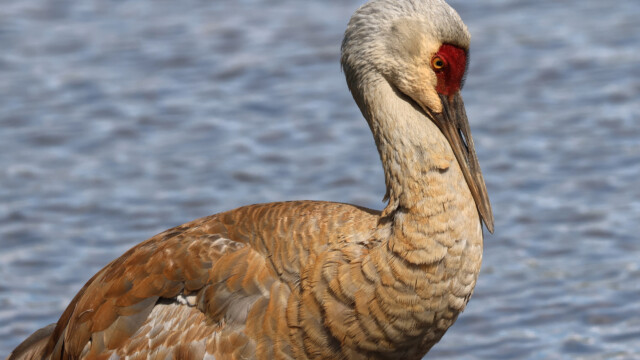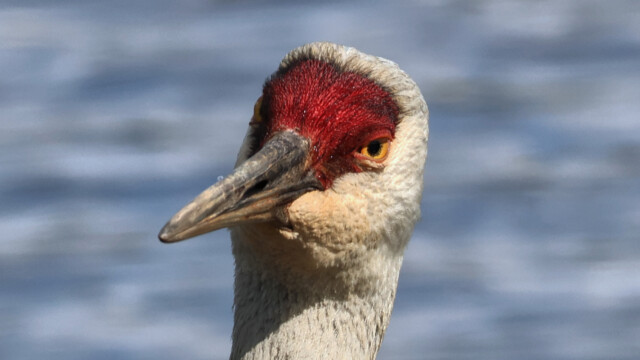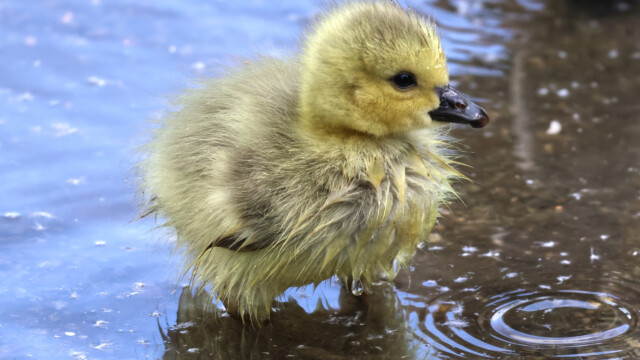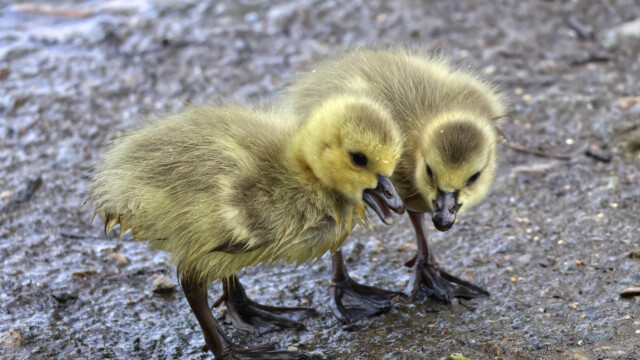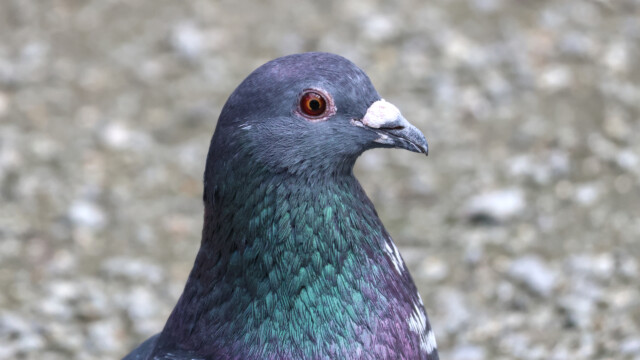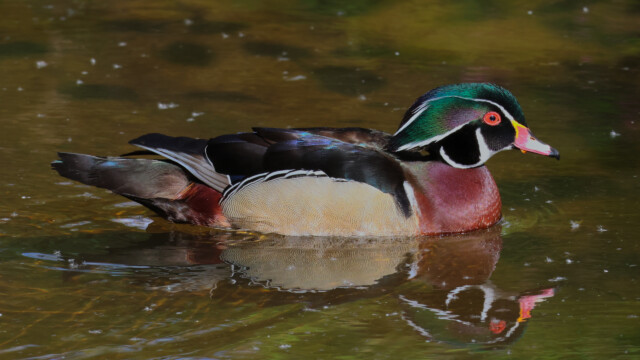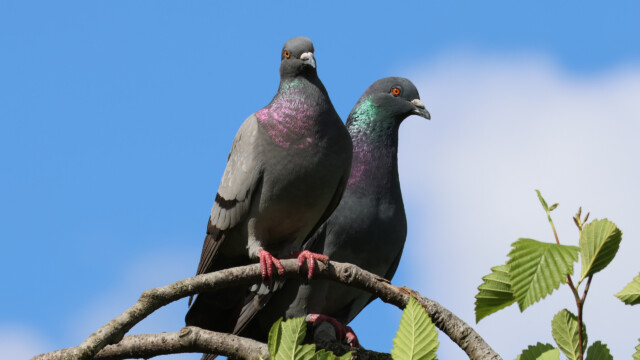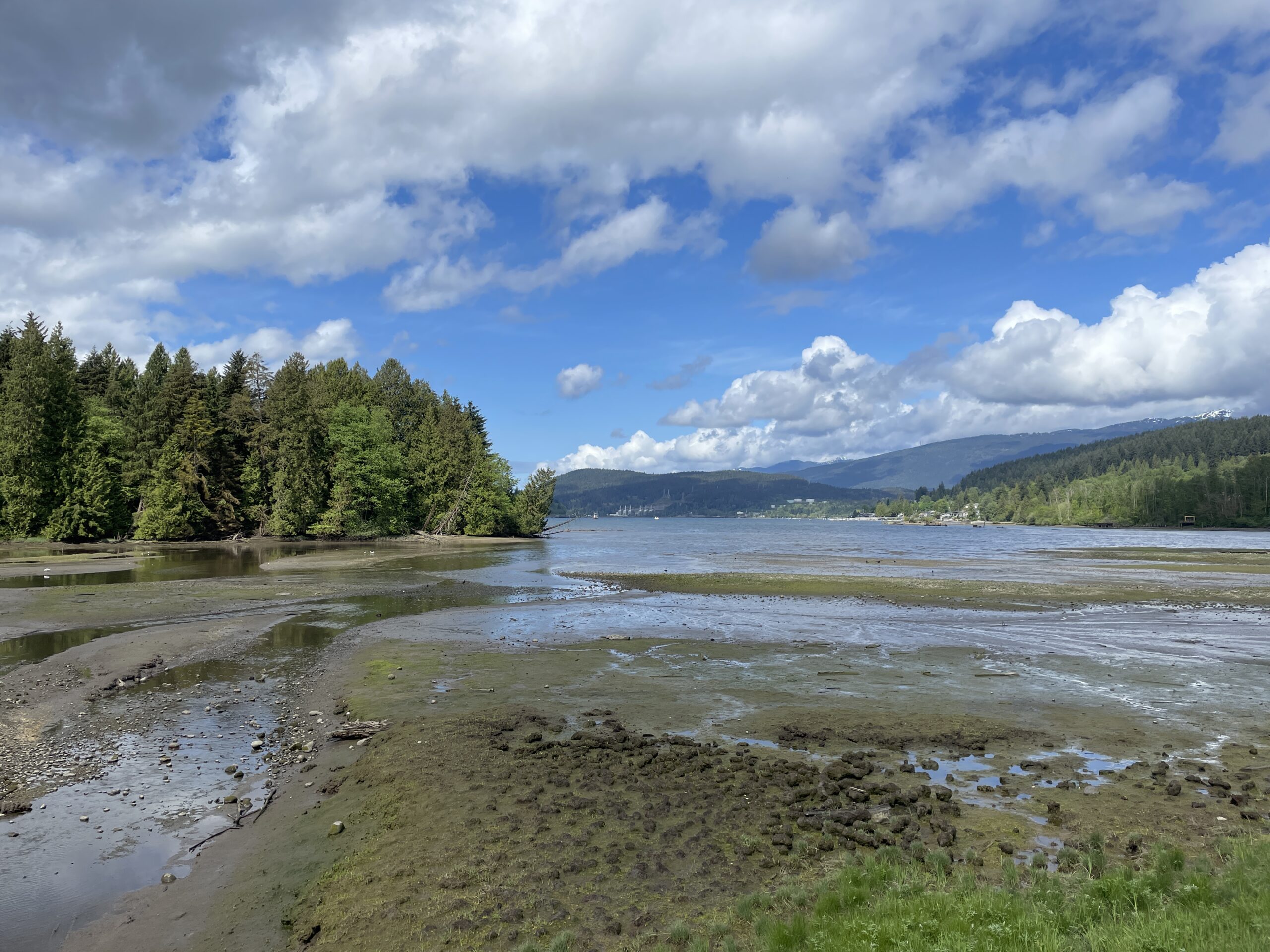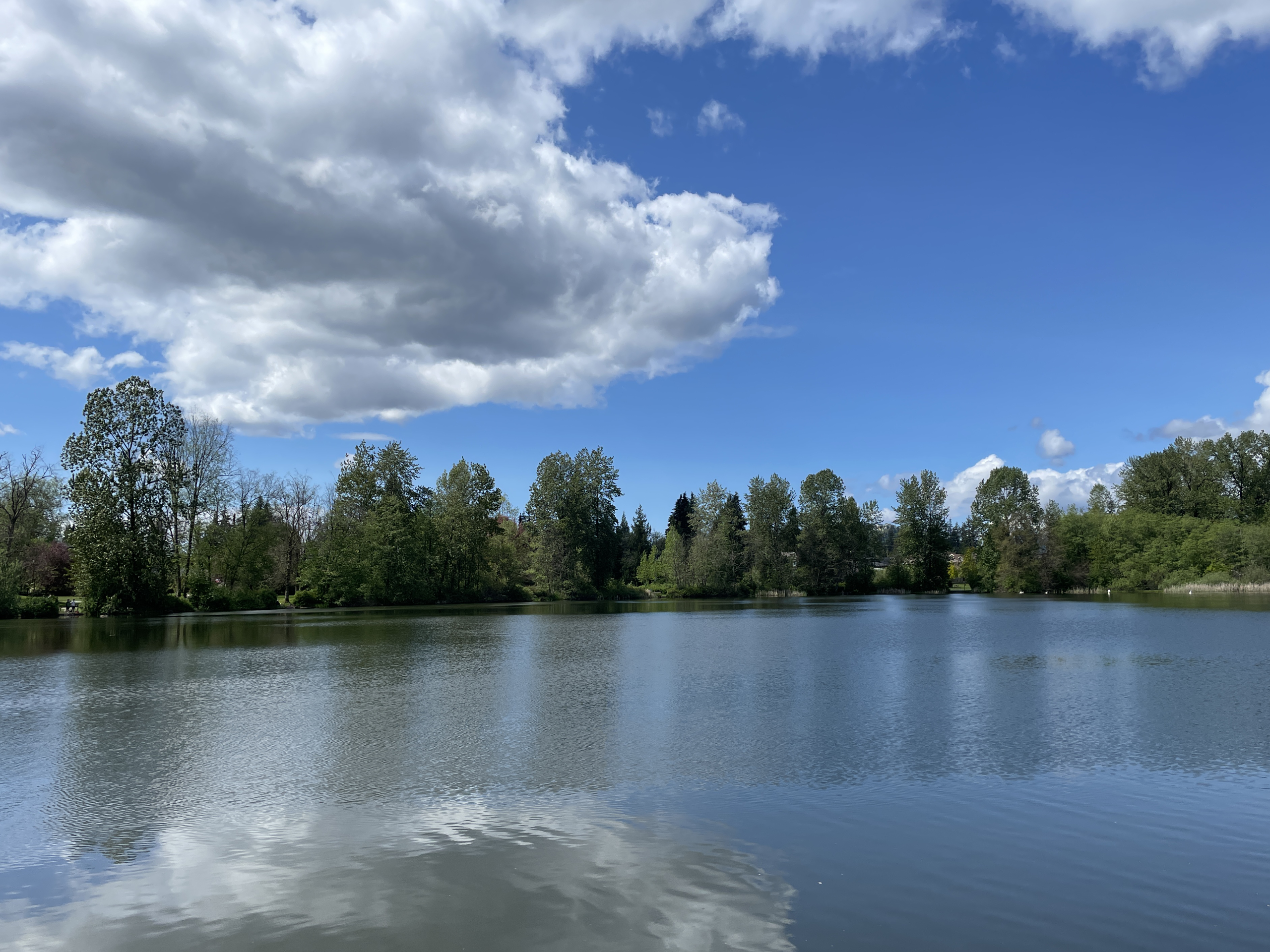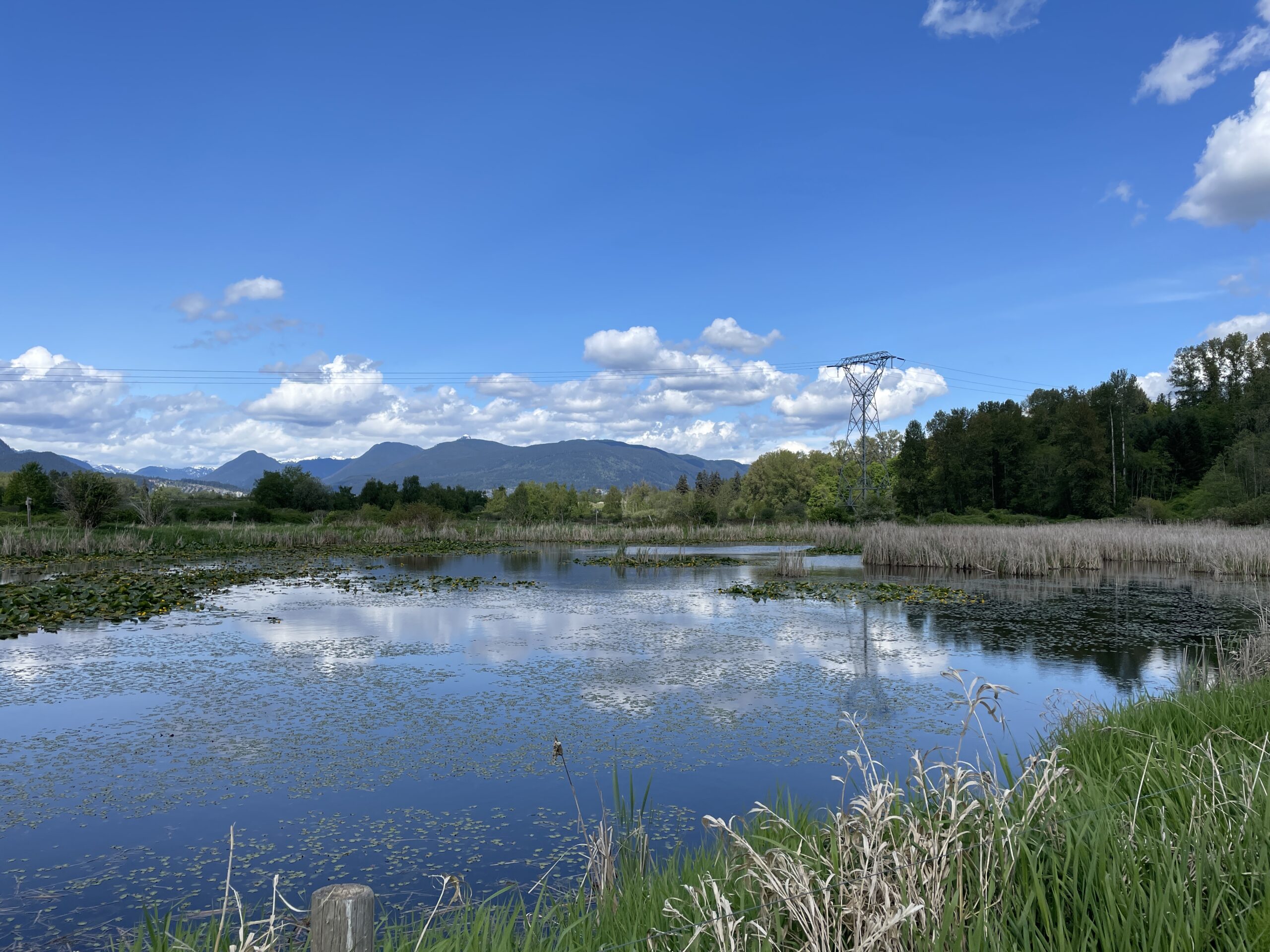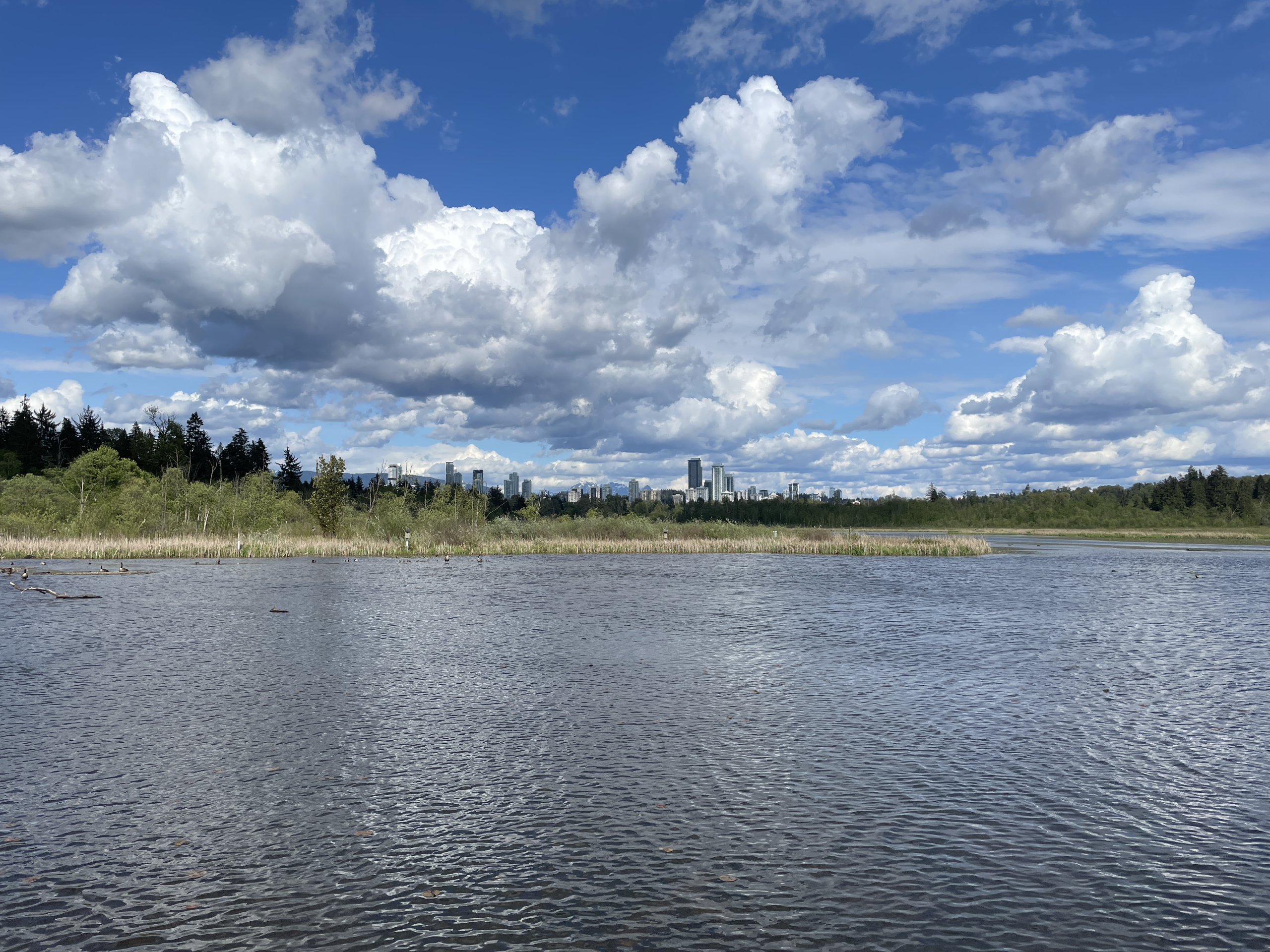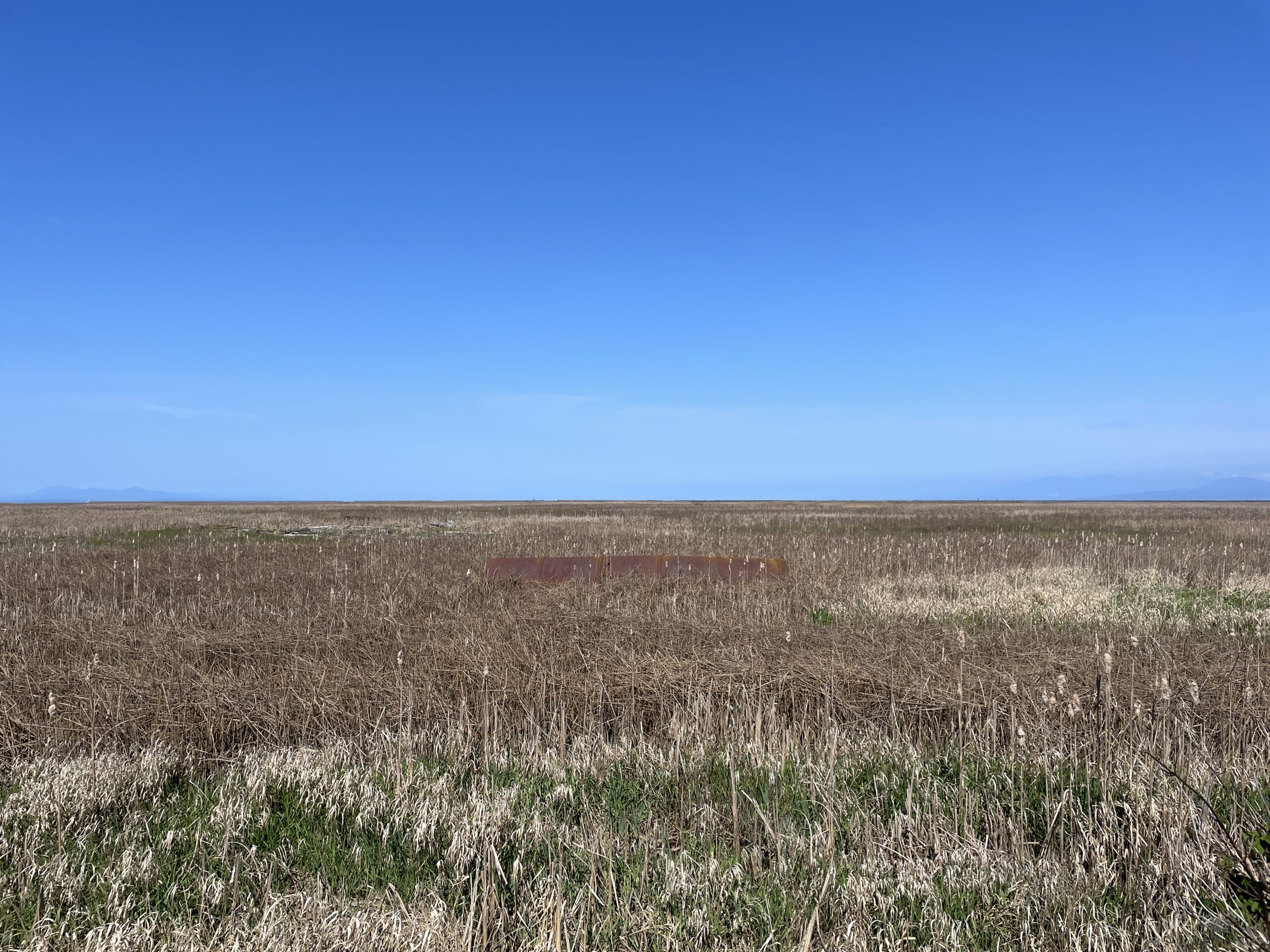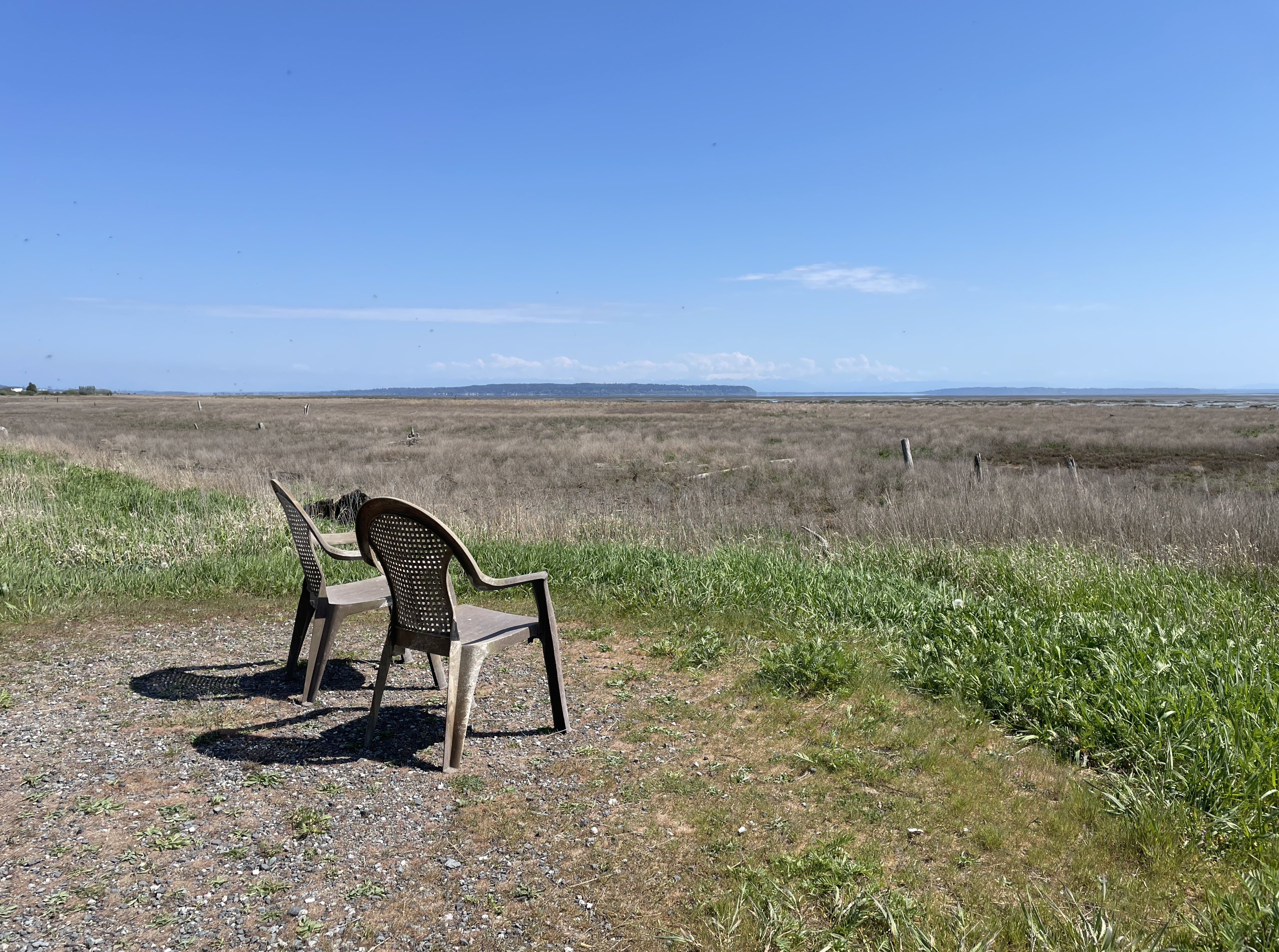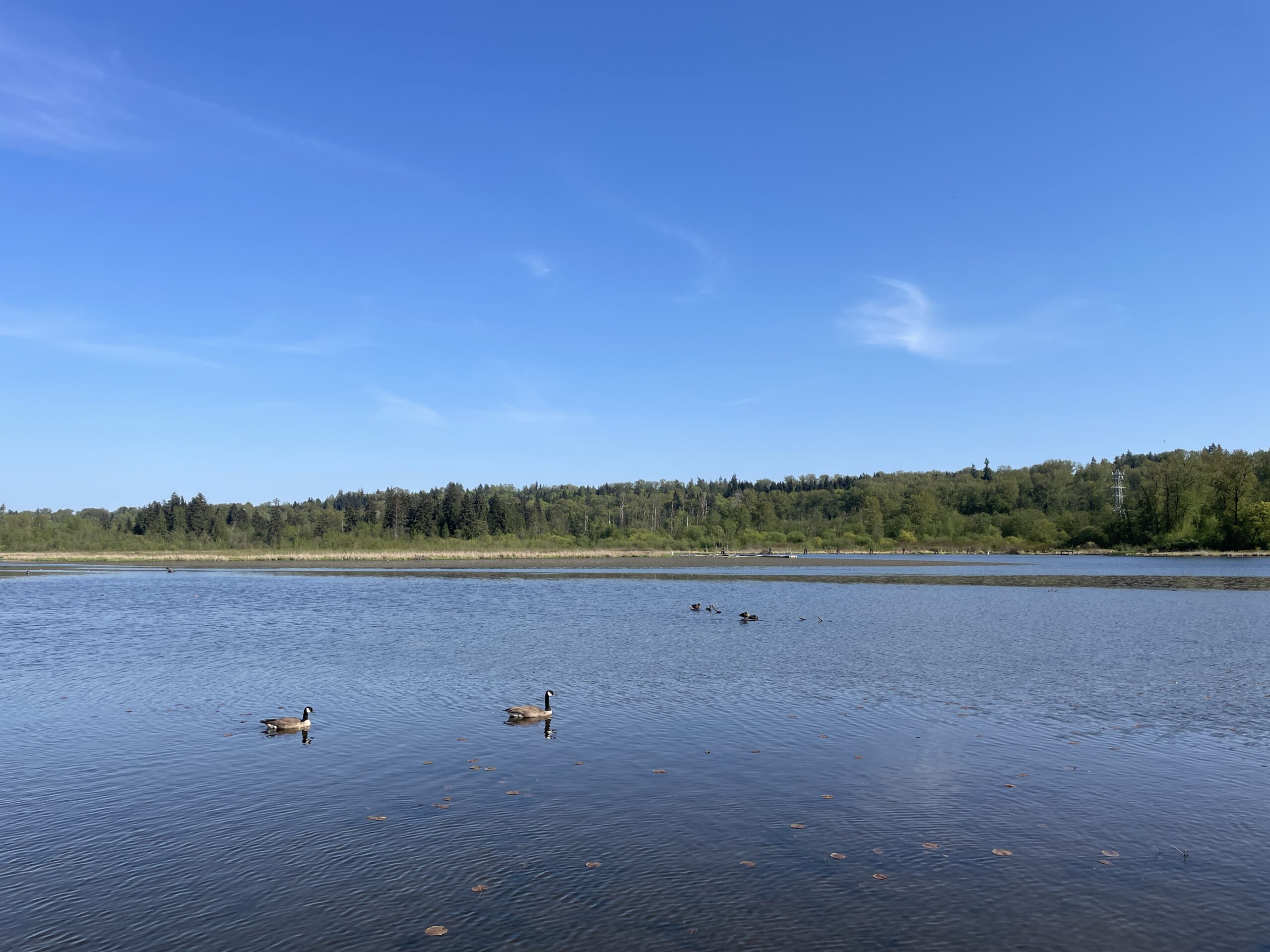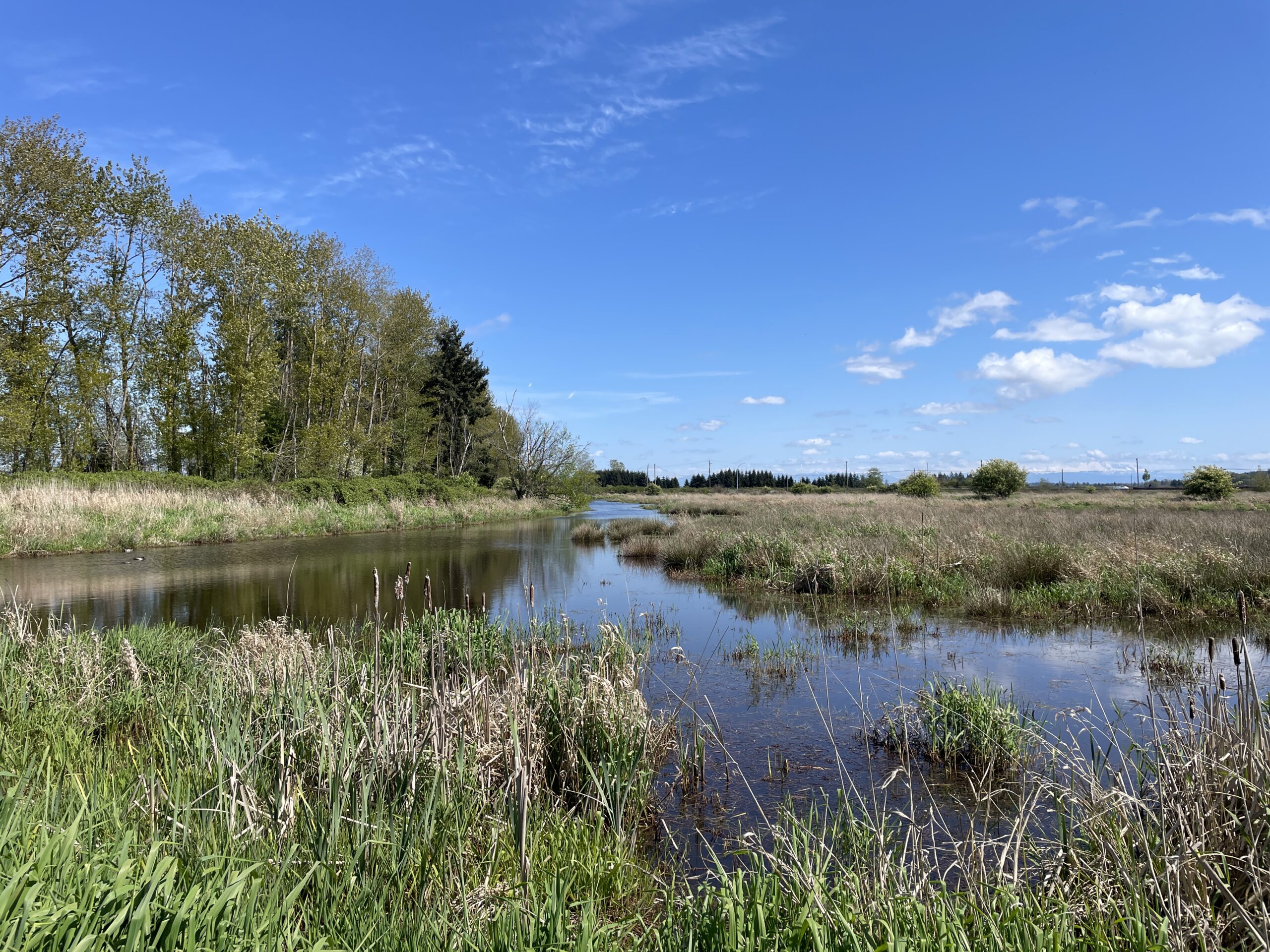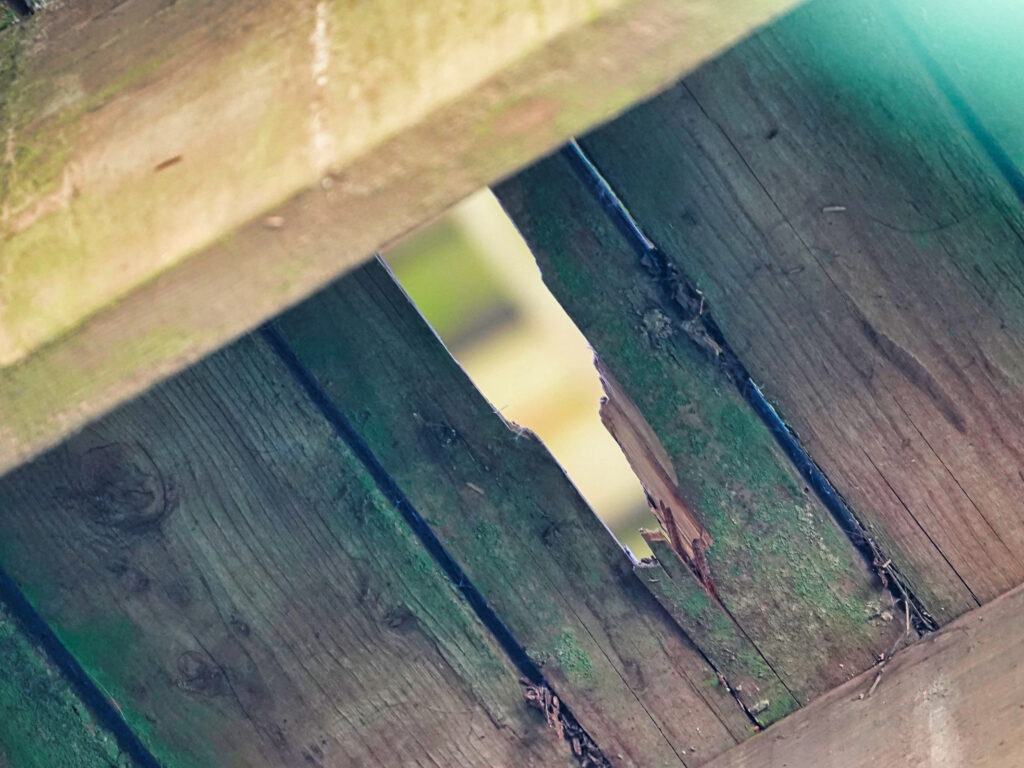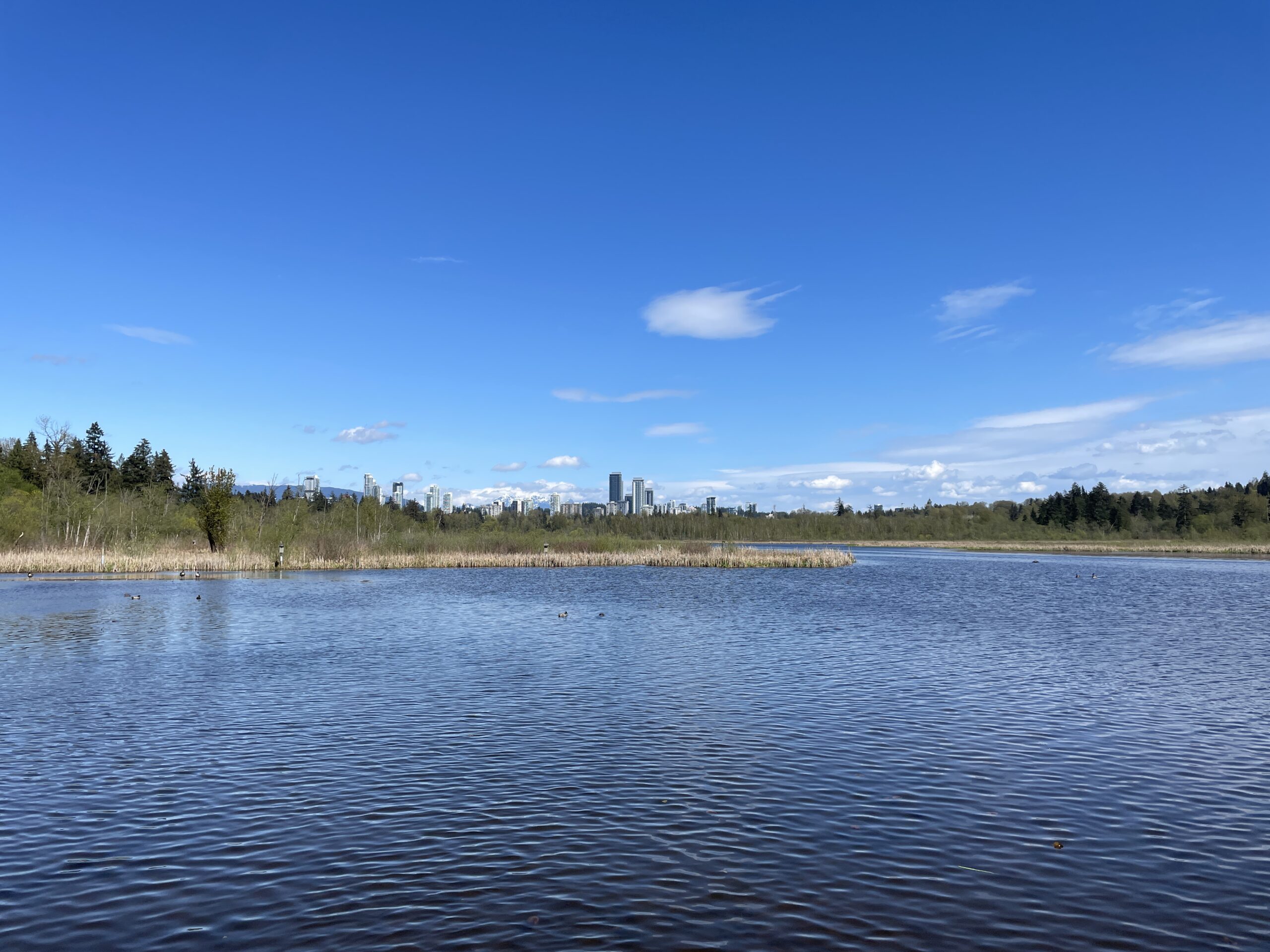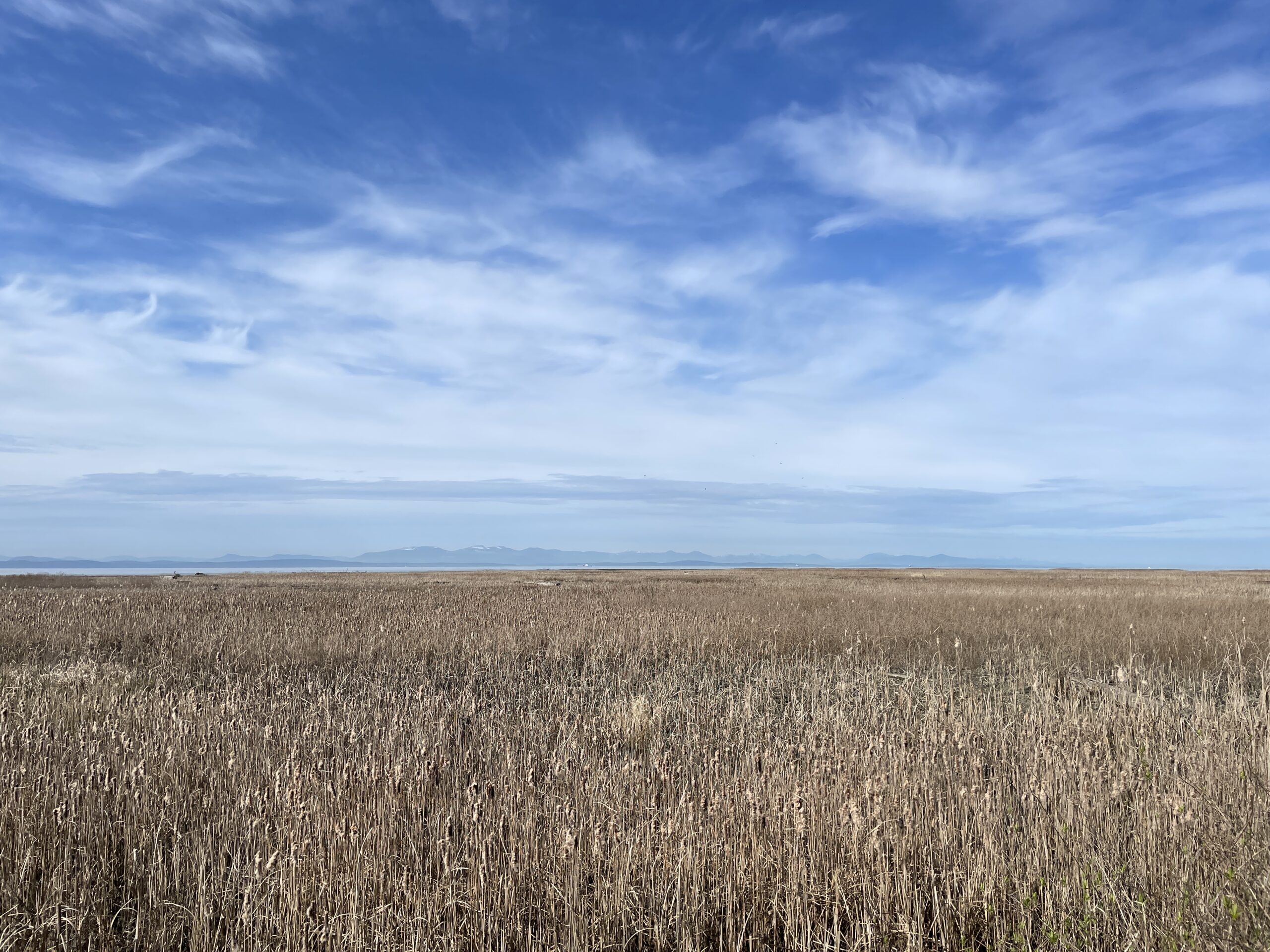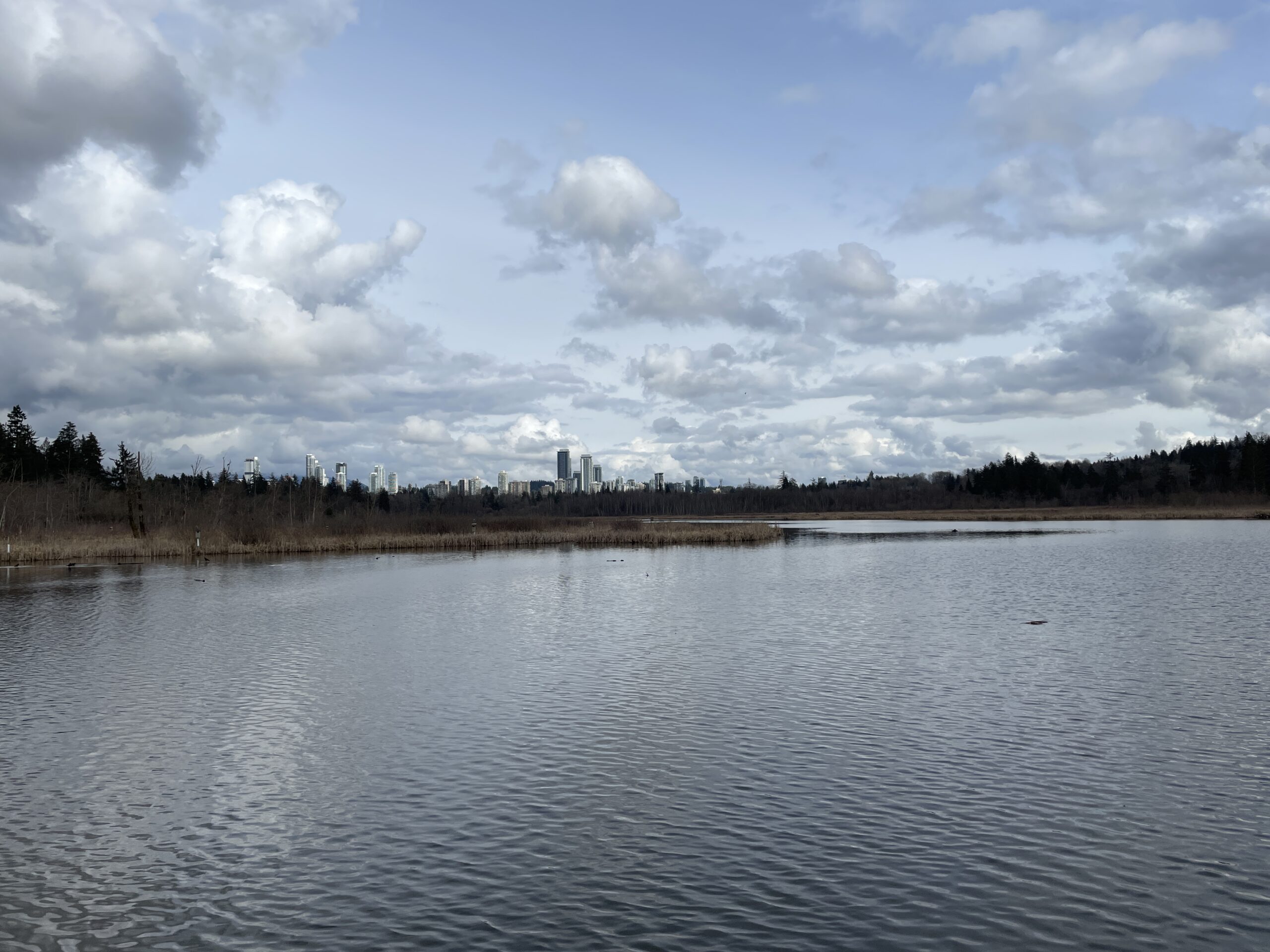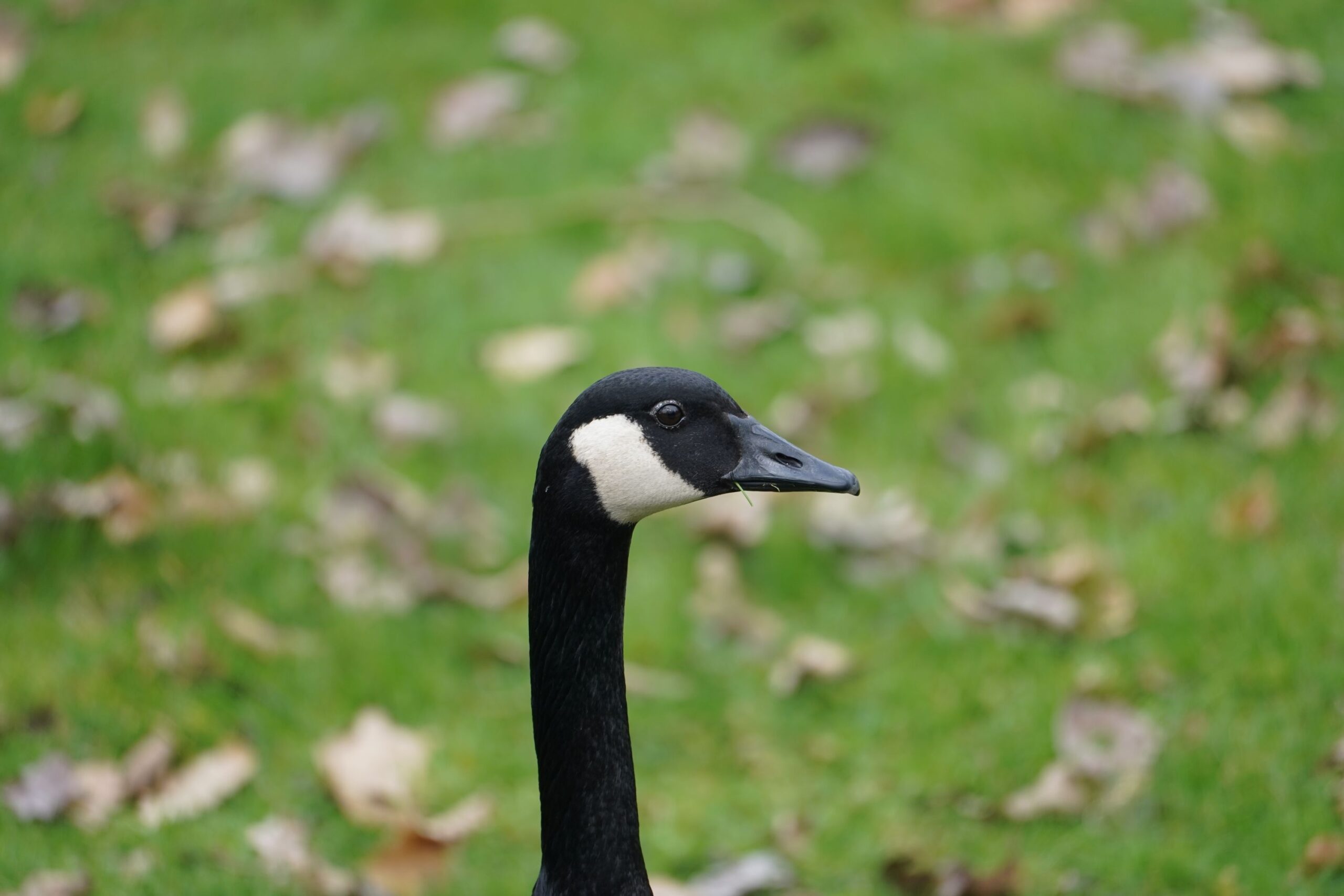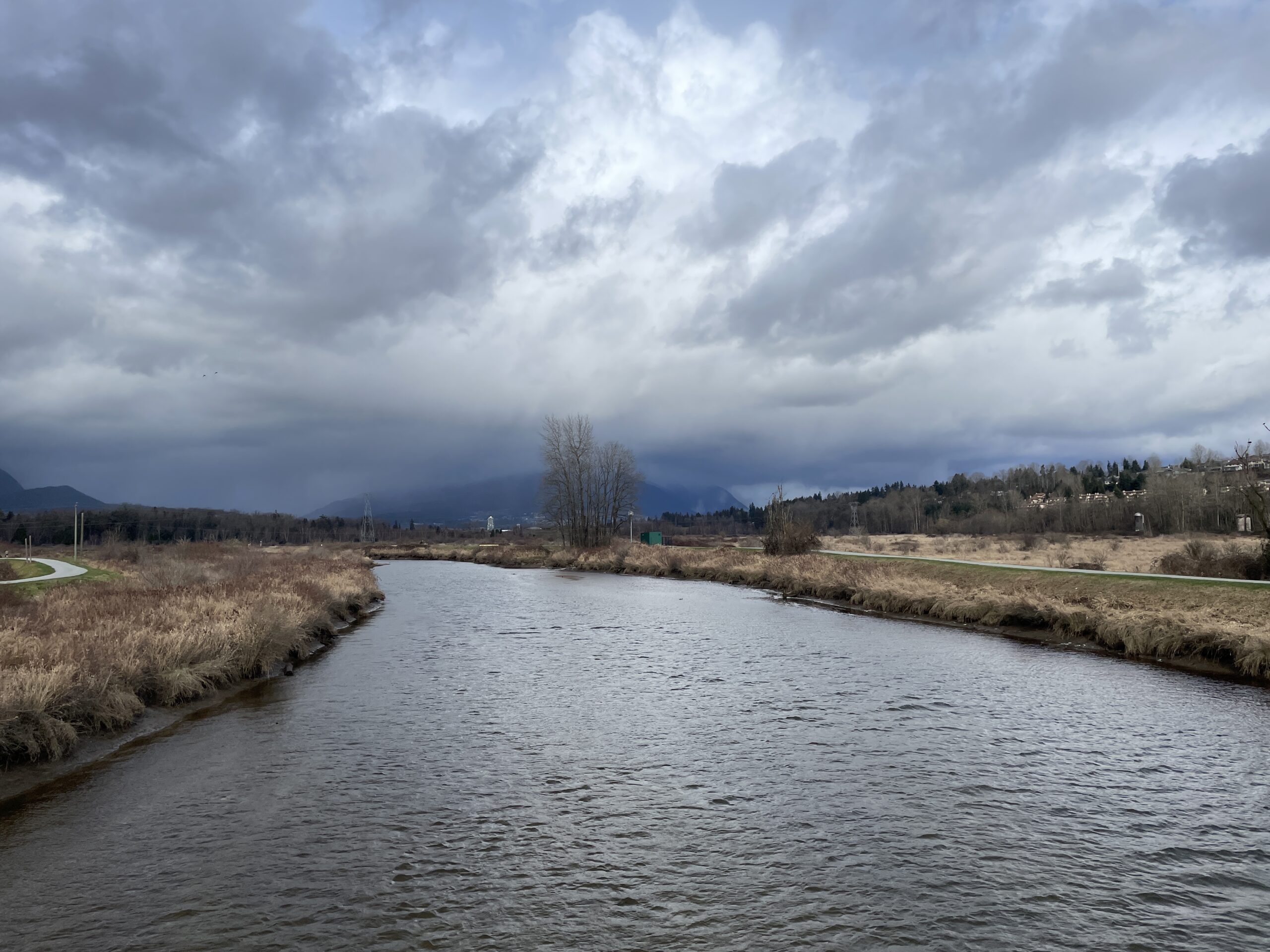Where: Rocky Point Park, Old Orchard Park, Inlet Park, Old Mill Site Park (Port Moody), Admiralty Point Park, Bedwell Bay (Belcarra), Tlahutum Regional Park (Coquitlam), Burnaby Lake (Burnaby)
Weather: Sunny, 15-24°C
Rocky Point and environs
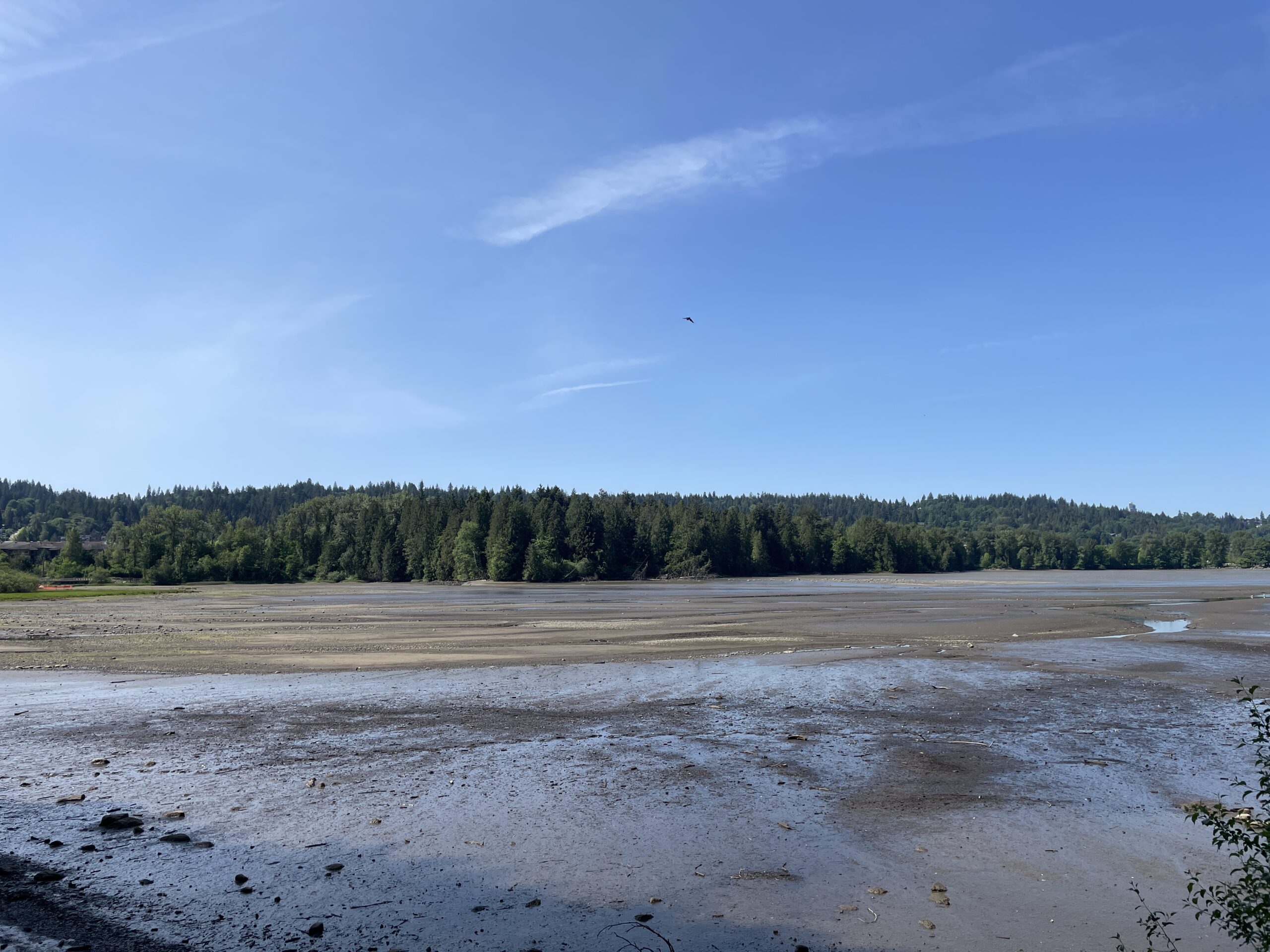
Today the forecast was warm and sunny, so I actually slapped on a copious amount of sunblock for the first time this year. It worked. No burning!
We started out with a return to the heron rookery near Rocky Point, as the baby dinosaurs (young herons) should be showing themselves in the nest around now–and they were! There seemed to be a max of three per nest and they were regularly looking about, sometimes getting up and flapping their proto-wings or walking around the edge of the nest. They presumably know to not try venturing out, because it’s a long way down. They are cutely hideous, with this dishevelled just-got-up look, but the stabby eyes already in place.
We ventured out onto Old Orchard Beach after, at my urging, and Nic stepped onto a dubious section to get closer to a heron to get a better shot. The heron flew off and Nic got stuck in the mud. He managed to extricate himself before I could get a photo, though. I went the long way around and remained unstuck.
We did not see much else, bird-wise in the area, but that’s normal. Nic spotted movement under some dirt and mulch and we watched as…something squirmed underneath, looking like it was about to emerge. And then it stopped. We have no idea if it was a particularly robust bug, a mole, or some eldritch horror.
Since we were over on the north side of the inlet, Nic suggested we visit Belcarra and check out some of the trails, so we did!
Belcarra
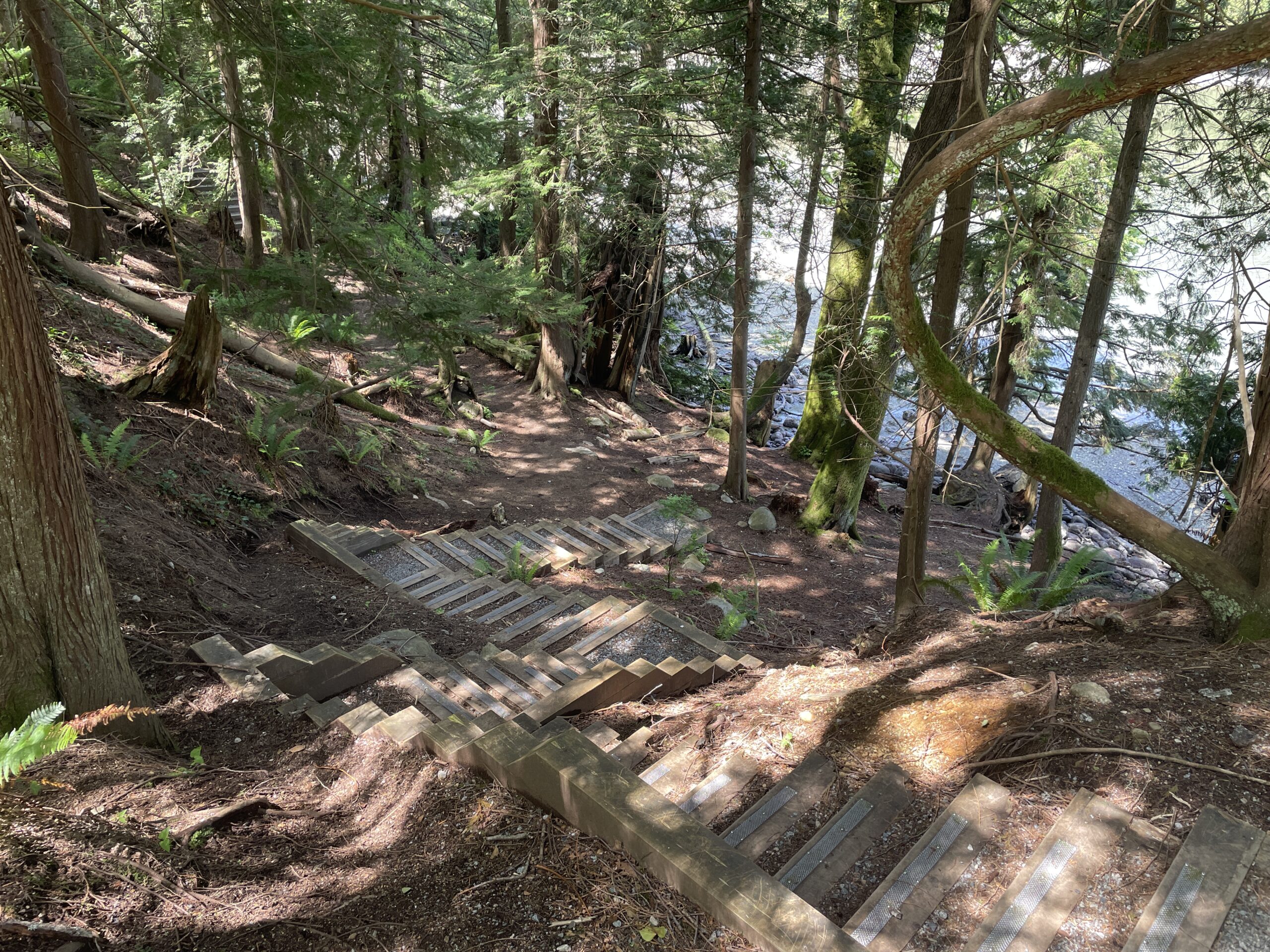
Repeating a theme throughout the day, there were a ton of people at the picnic area on the beach facing Boulder Island (the place one goes to rock out, presumably). This was the first summer-like day of the month, and I guess everyone wanted to savour it after most of May has been cooler and cloudier than normal.
We went down a few forest trails and I took possibly my worst-ever photo of a song sparrow with my kit lens. But I switched back to the telephoto as we came out to Bedwell Bay and there we found along the shore, getting pushed by the tide, a bunch of adorably tiny crabs.
This is an area with beautiful trails through forests, nice vistas, but not many birds, so we are unlikely to return too often, but it was nice to check out a new place.
Tlahutum Regional Park
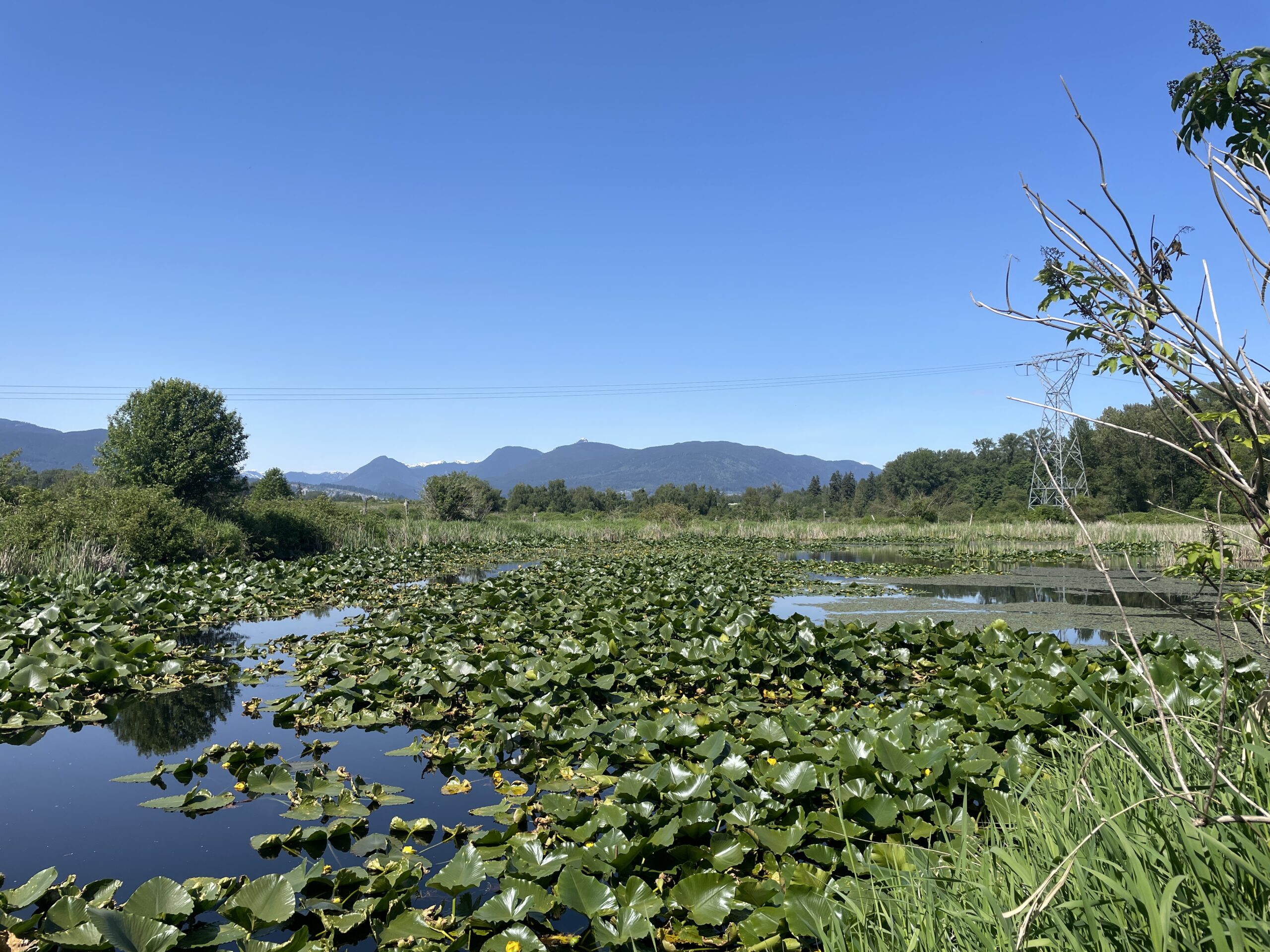
After the new, a return to the old and after some weeks of seeing few herons, they were all over today. We say one here grab a fair-sized fishy from one of the creeks. We also our first cedar waxwings of the season, woo. The big pond also featured a pair of shovellers who had not yet shovelled off. Or maybe never will, because apparently they just go into hiding. The community garden yielded few birbs, but there were shiny swallows, at least one white-crowned sparrow and pollinators on nearly every flower.
We made copious use of the water fountain here, as Tlahutum offers no over at all, and by now it was mid-afternoon.
Piper Spit, Burnaby Lake
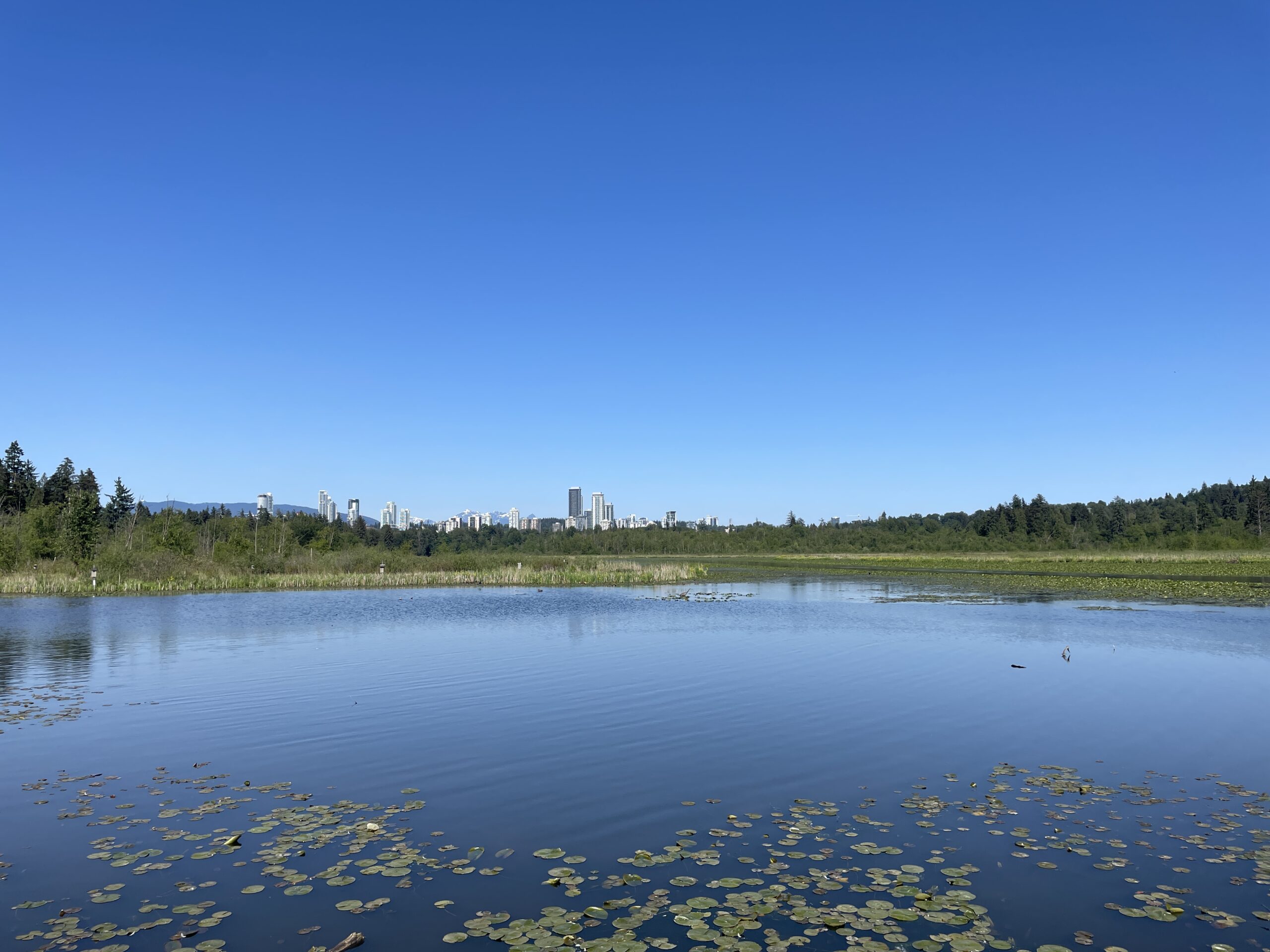
People were parked in pretty much every available space around the Nature House, but we lucked out and got a spot close to it.
The vibe (much as I hate the word) is different here right now for a few reasons:
- The water level of the lake is considerably higher than normal. I assume this is a deliberate strategy, maybe to help with the rowing club. The downwisde is no shorebirds.
- Bird feeding is currently prohibited due to attracting bears. A few people still were, but it was clear most were obeying and as a result, the waterfowl behvior was different, with many content to stay farther away from the pier, since there were no goodies to be had. This meant fewer adorable close-ups.
- And of course, a lot of migrants have migrated. One day we will have coots again. One day.
- Also, there were a weirdly large number of people fishing from the pier. Nic jokingly referred to it as International Fishing Day and a few kids nearby were ready to believe it, which, given the things people believe these days, is almost quaint!
We didn’t even catch any squirrels doing the cute squirrel thing. Maybe next time we’ll hit different parts of the trail and be blessed by the return of the mountain bluebirds. It could happen!
The Shots
Shot with a Canon EOS R7 with 18-150 mm kit lens and 100-400 mm telephoto.
The Birds (and other critters)
Sparrows and sparrow-adjacent:
- Brown-headed cowbird
- Cedar waxwing
- Common yellowthroat
- Red-winged blackbird
- Spotted towhee
- Song sparrow
- Tree swallow
- White-crowned sparrow
Waterfowl and shorebirds:
- Canada goose
- Double-crested cormorant (and plenty of them)
- Great blue heron
- Mallard
- Northern shoveller
- Sandhill crane
- Wood duck
Common:
- American crow
- Assorted gulls
- Rock pigeon
Raptors:
- None?
Non-birds:
- Bees, bees, bees
- Dragonflies
- Ladybugs
- Something in the earth

